Nowadays, everyone is aware of the advantages that yoga may provide. Yoga is an ancient discipline, but it has recently become a vital component of millions of people’s everyday lives. While many practise yoga at home while learning online, some enrol in professional yoga classes to master different yoga asanas. Yoga can be very beneficial to your health if practised correctly. Here are a few yoga poses and their advantages. From battling stress, worry, and sadness to maintaining the heart and stomach’s health, these yoga poses do it all. Some yoga poses help cure migraines, while others might lessen body inflammation. The list was created to assist anyone looking for a comprehensive reference to different yoga poses. These yoga postures
Mountain Pose (Tadasana):
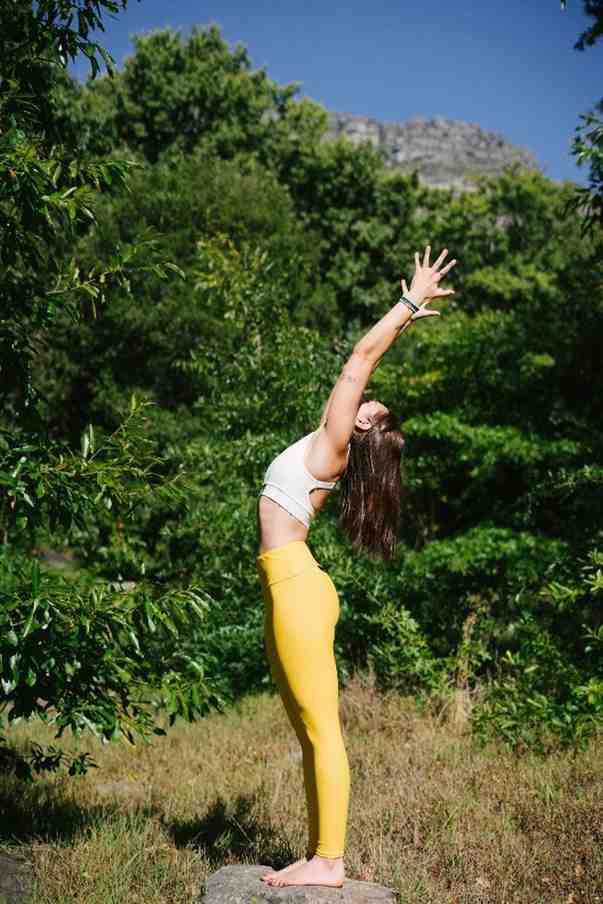
Tadasana is a foundational pose that promotes alignment, stability, and mindfulness. In this pose, you stand tall with your feet together or hip-width apart, grounding through your feet. Your spine is elongated, shoulders relaxed, and arms rest alongside your body. Tadasana helps improve posture, strengthens the legs and core, and encourages a sense of grounding and presence.
Tree Pose (Vrksasana):
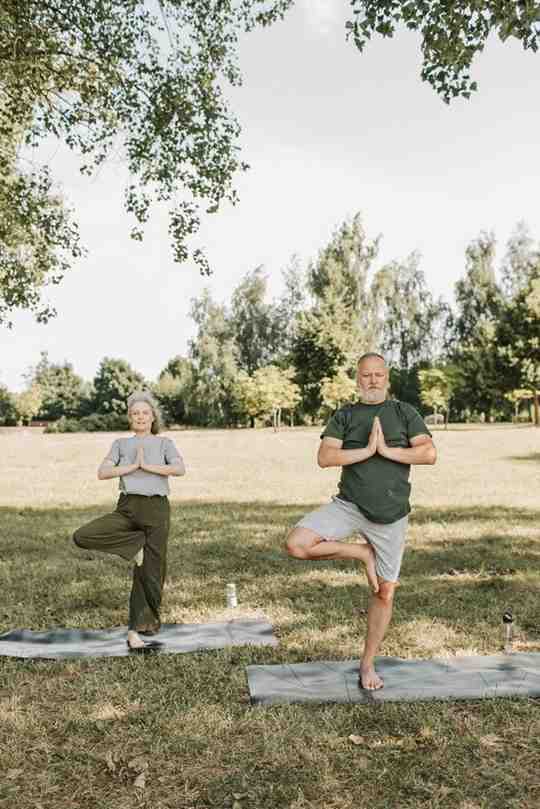
Vrksasana is a balancing pose that cultivates focus, stability, and strength. To practice this pose, you start in Tadasana and shift your weight onto one foot. The opposite foot is placed on the inner thigh or calf, avoiding the knee joint. Your hands can be at your heart center or extended overhead. Tree Pose improves balance, strengthens the legs, and enhances concentration and body awareness.
Downward Facing Dog (Adho Mukha Svanasana):
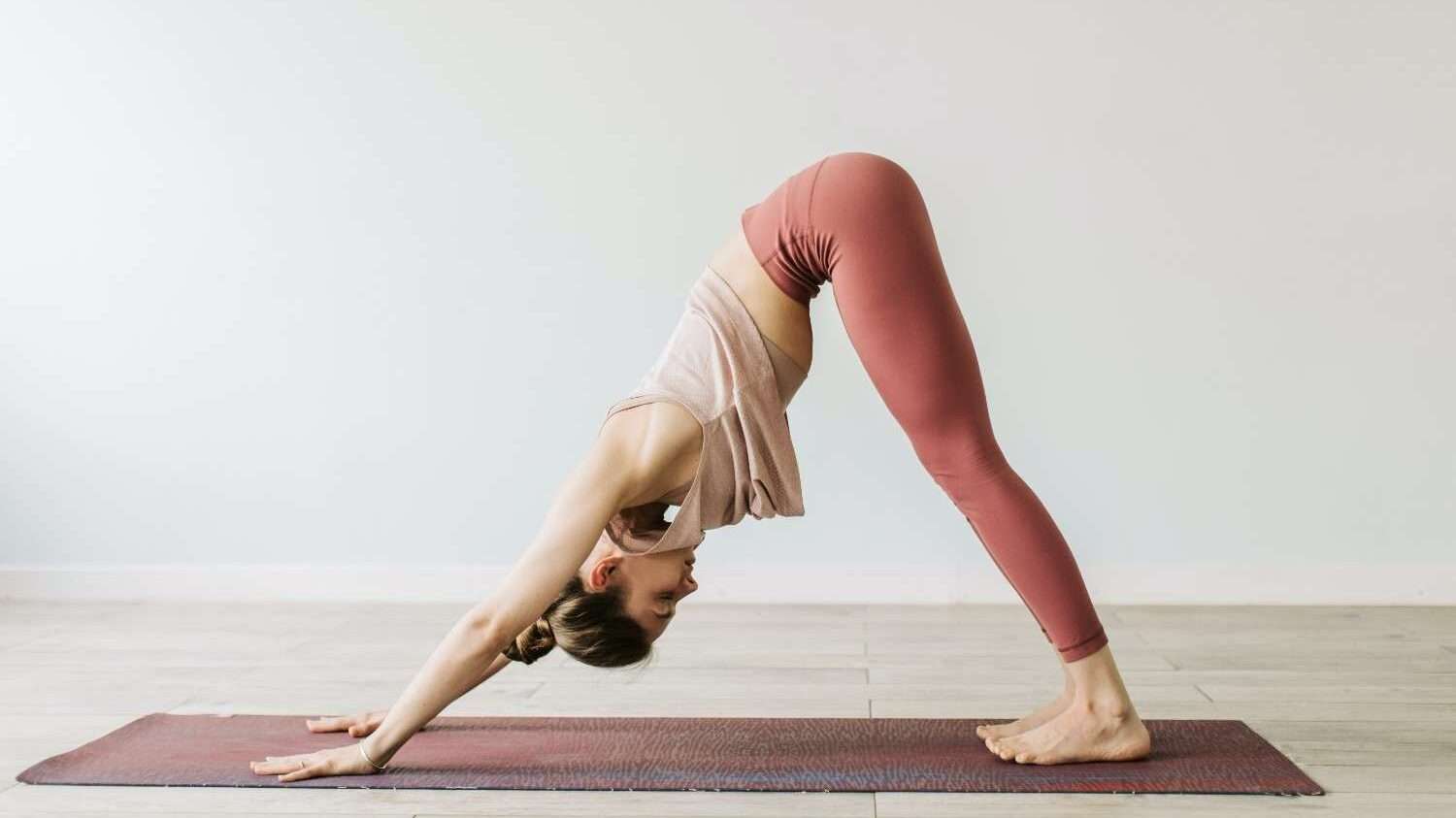
Adho Mukha Svanasana is an inverted pose that stretches and strengthens the entire body. From a tabletop position, you lift your hips upward and press your palms and heels into the ground, forming an inverted V shape. Your head relaxes between your arms, and your gaze is towards your feet. Downward Facing Dog lengthens the spine, stretches the hamstrings and shoulders, energizes the body, and promotes relaxation.
Warrior I (Virabhadrasana I):
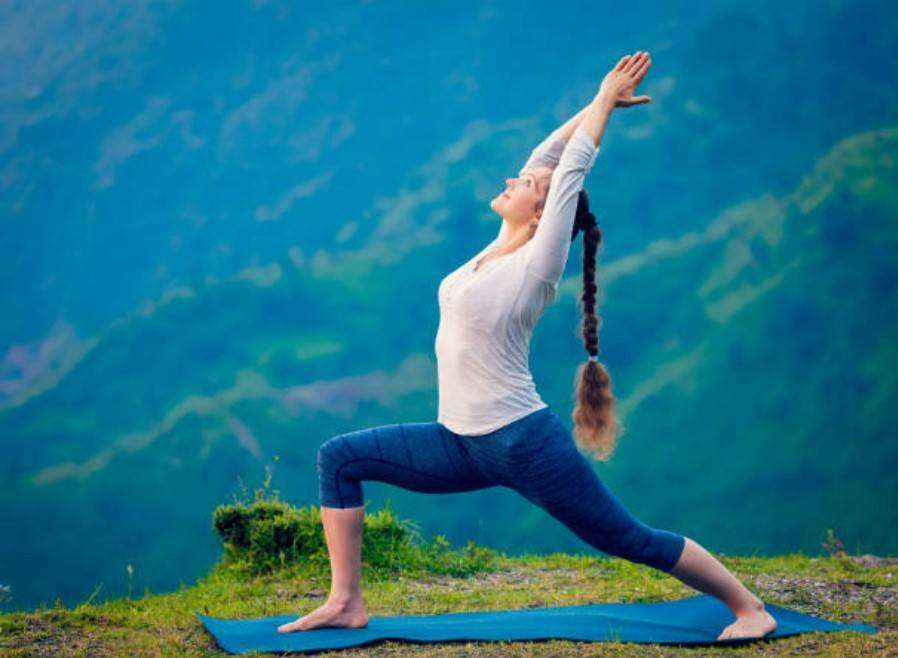
Virabhadrasana I is a powerful standing pose that builds strength, stability, and focus. From a lunge position, you align your front heel with the back arch, bend the front knee, and raise your arms overhead. The back foot is turned slightly inward. Warrior I strengthens the legs, opens the chest and shoulders, improves balance, and cultivates inner strength and determination.
Warrior II (Virabhadrasana II):
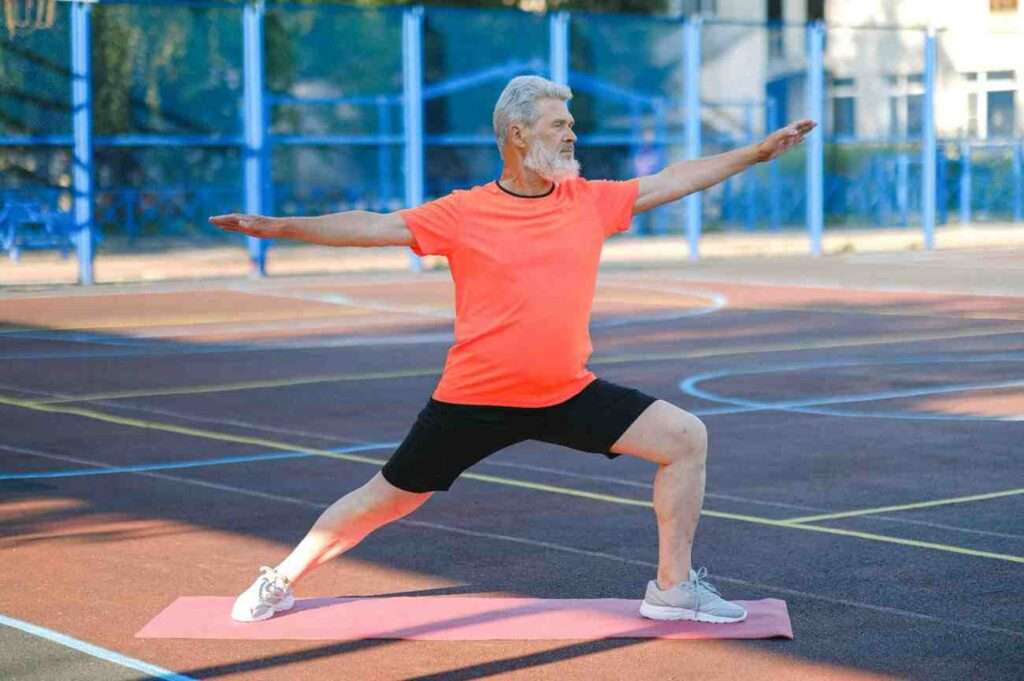
Virabhadrasana II is a dynamic standing pose that enhances strength, stamina, and concentration. From a lunge position, you open the hips and extend your arms out to the sides, parallel to the ground. Your front knee is bent, aligning it with the ankle, while the back foot remains parallel to the back edge of the mat. Warrior II strengthens the legs, improves balance, opens the hips and chest, and promotes a sense of warrior-like focus and stability.
Warrior III (Virabhadrasana III):
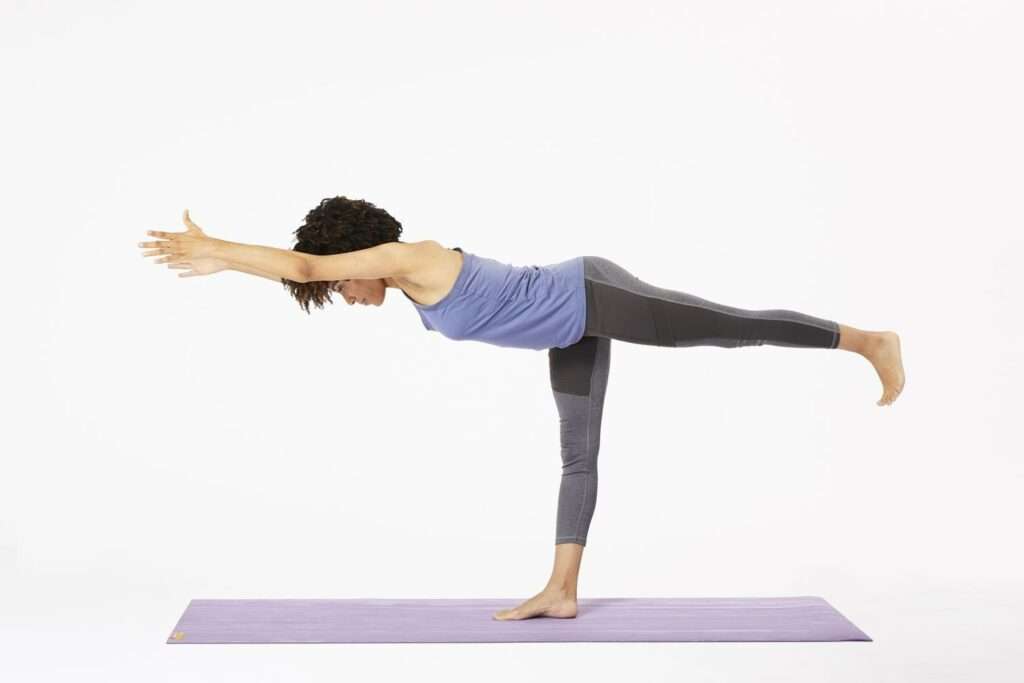
Virabhadrasana III is a challenging balancing pose that develops strength, stability, and poise. From Mountain Pose, you hinge forward at the hips while lifting one leg behind you. Your arms extend forward, and your body forms a straight line from head to toe. Warrior III strengthens the legs and core, improves balance and concentration, and cultivates a sense of inner strength and balance.
Plank Pose:
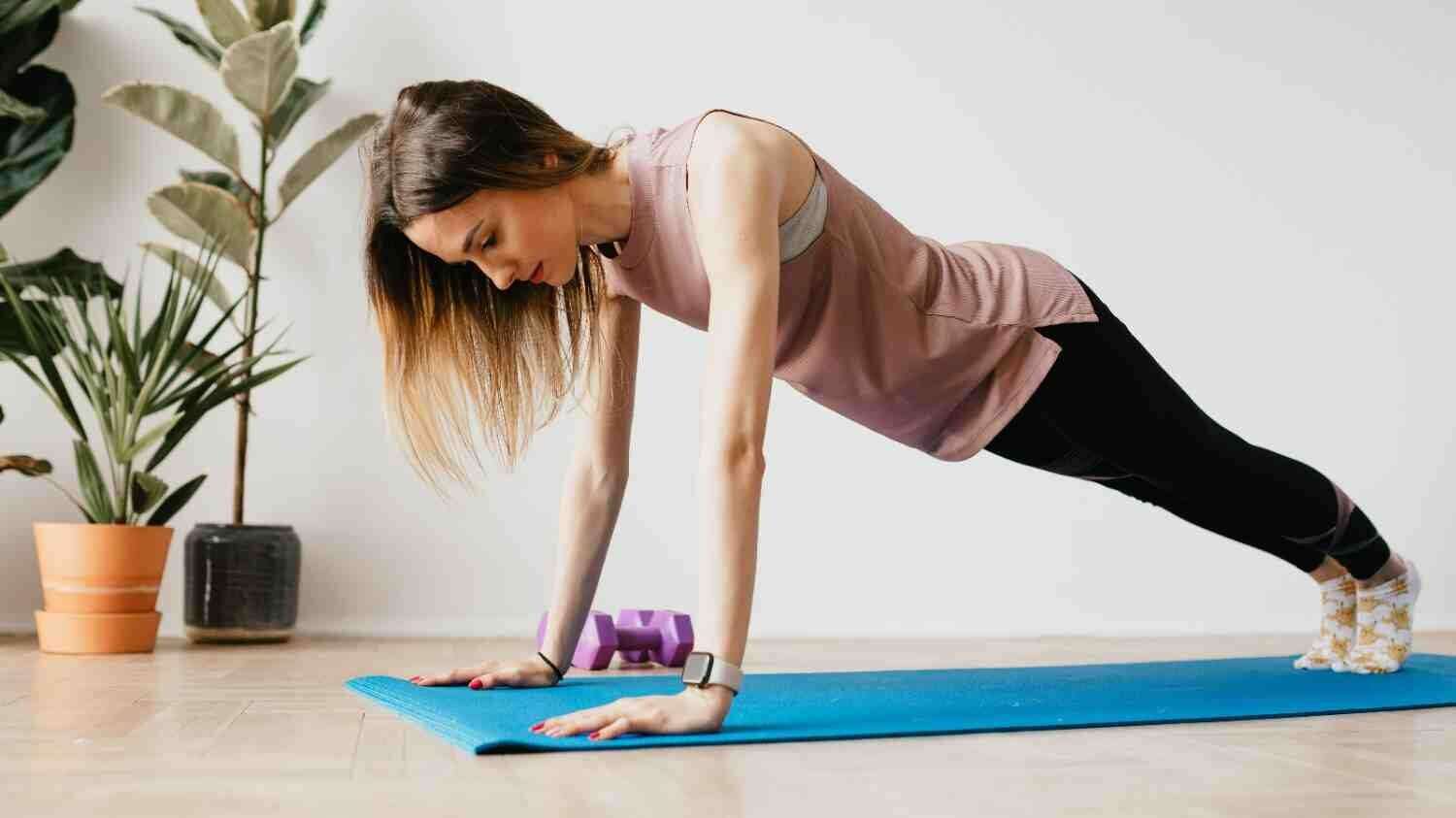
Plank Pose is a foundational pose that strengthens the core, arms, and shoulders. From a push-up position, you align your wrists under your shoulders, engage your core, and extend your legs straight behind you. Your body forms a straight line from head to heels. Plank Pose improves core stability, strengthens the upper body, enhances posture, and builds overall body strength.
Child’s Pose (Balasana):
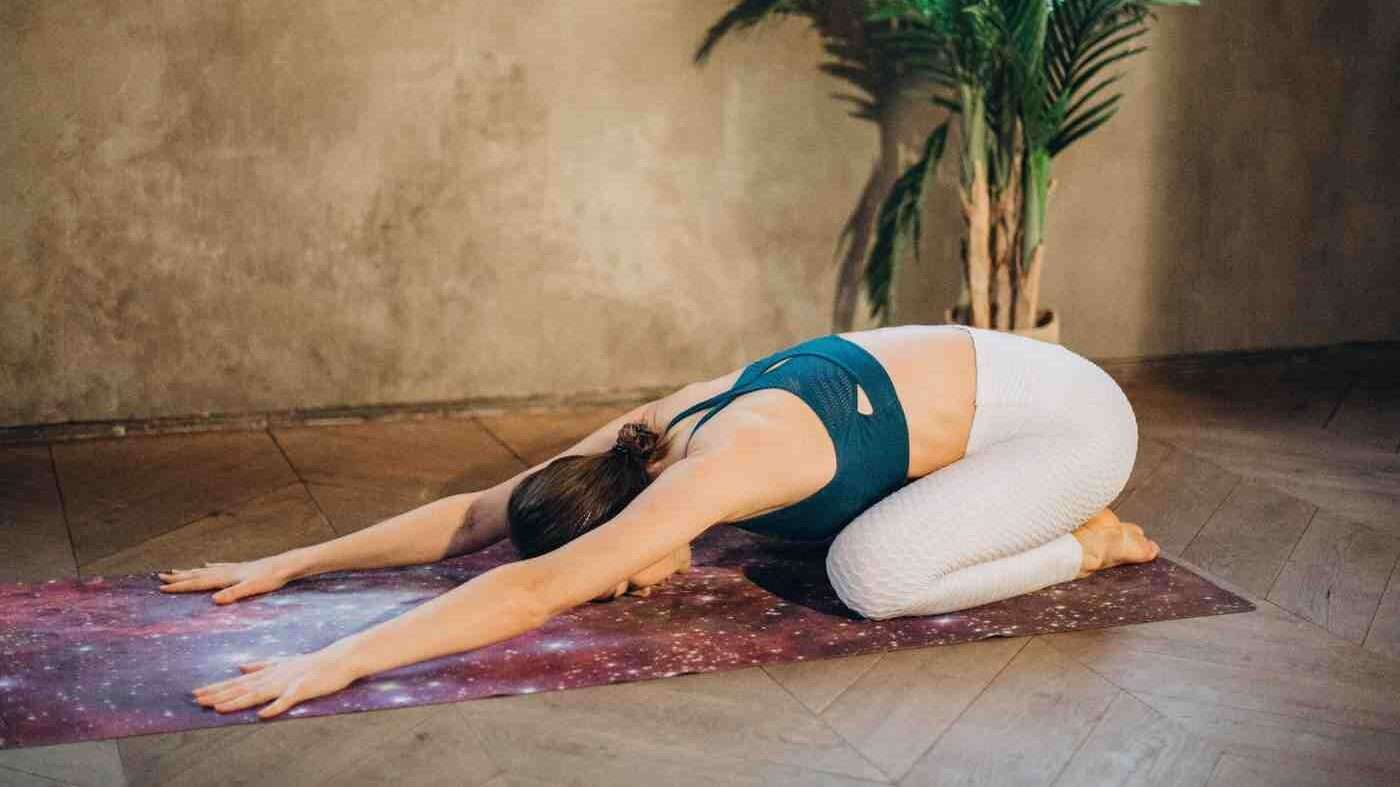
Balasana is a resting pose that promotes relaxation, surrender, and release. From a kneeling position, you sit back on your heels, lower your forehead to the ground, and extend your arms forward or alongside your body. Child’s Pose stretches the back, hips, and shoulders, calms the mind, relieves stress and tension, and serves as a resting point during yoga practice.
Bridge Pose (Setu Bandhasana):
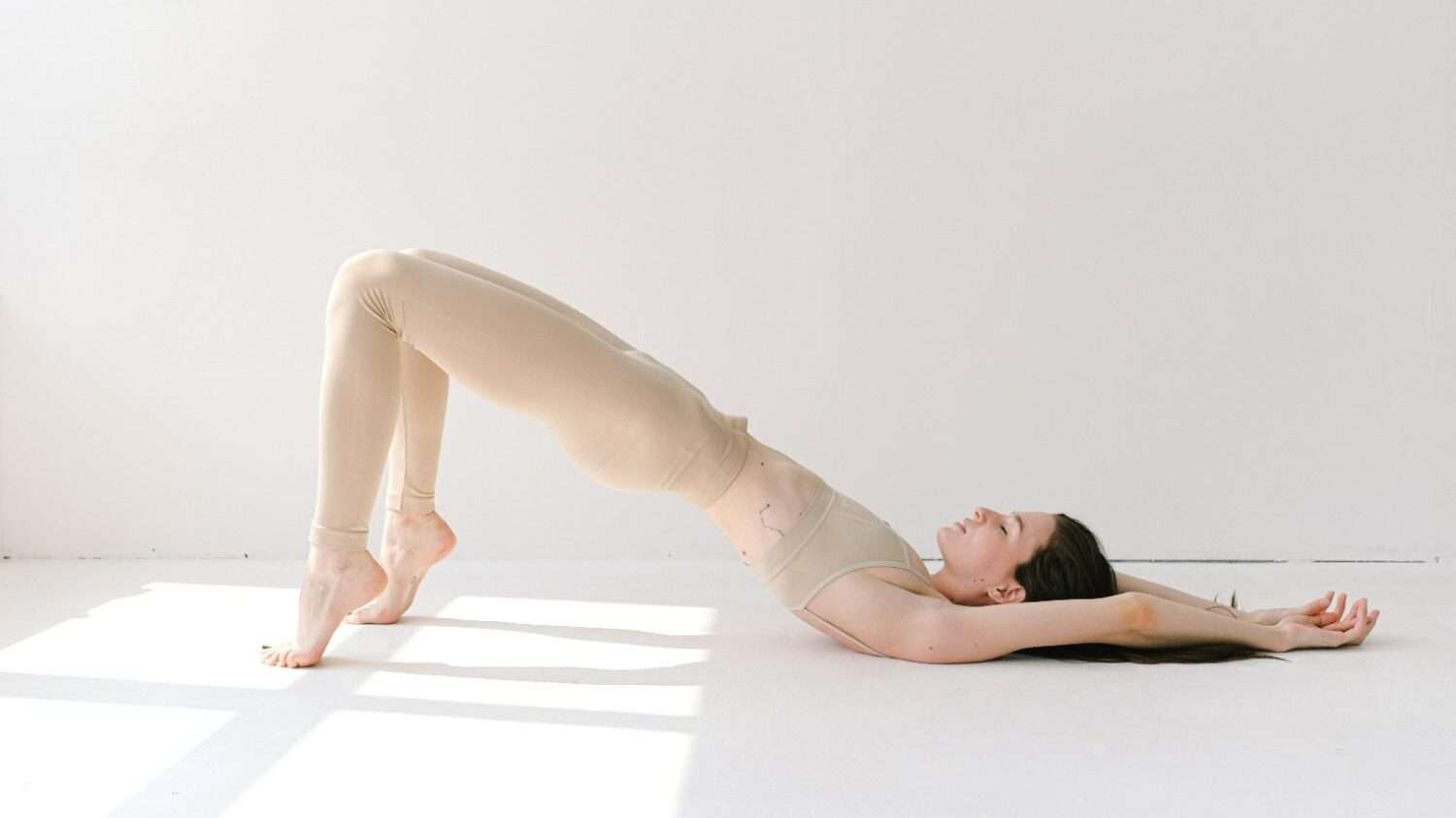
Setu Bandhasana is a backbend pose that strengthens the back, opens the chest, and energizes the body. Lying on your back, you bend your knees and place your feet on the ground, hip-width apart. With arms alongside your body, you press into your feet and lift your hips off the ground, creating a bridge shape. Bridge Pose improves spinal flexibility, strengthens the legs and core, stimulates the thyroid gland, and rejuvenates the body.
Cobra Pose (Bhujangasana):
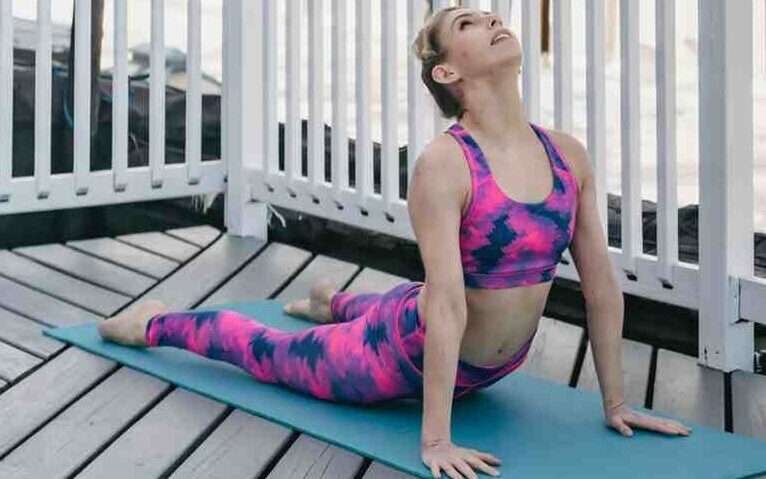
Bhujangasana is a gentle backbend pose that strengthens the spine, opens the chest, and promotes vitality. From a prone position, you place your hands underneath your shoulders, tuck your elbows in, and lift your upper body, arching the spine. Cobra Pose stretches the front of the body, strengthens the back muscles, improves posture, and stimulates the digestive and reproductive systems.
Bow Pose (Dhanurasana):
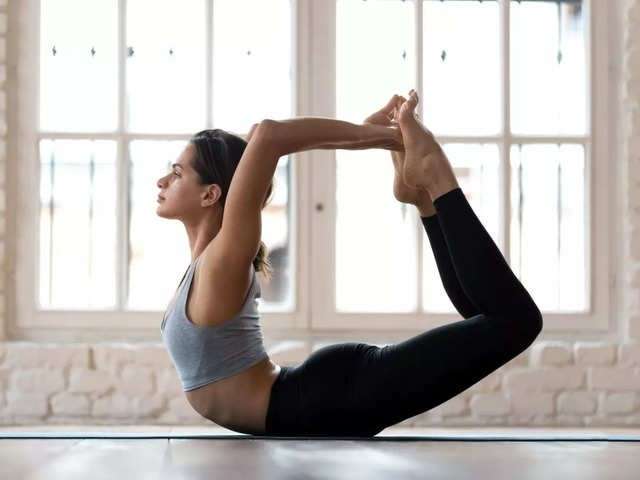
Dhanurasana is a backbend pose that enhances strength, flexibility, and balance. Lying on your belly, you bend your knees and reach your hands back to hold onto your ankles. As you inhale, you lift your chest, thighs, and shins off the ground, creating a bow-like shape. Bow Pose stretches the entire front of the body, strengthens the back muscles, improves digestion, and stimulates the abdominal organs.
Seated Forward Bend (Paschimottanasana):
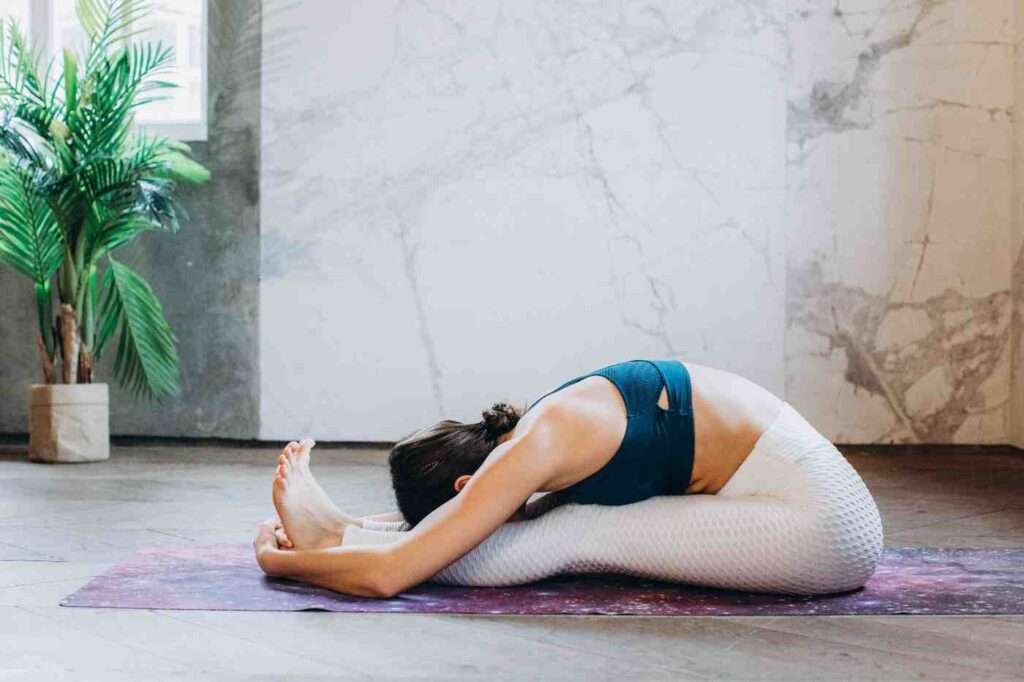
Paschimottanasana is a seated forward bend that stretches the entire back body and promotes relaxation. Sitting with your legs extended in front of you, you fold forward from the hips, reaching for your feet or ankles. Your head moves towards your legs. Paschimottanasana stretches the hamstrings, calves, and spine, stimulates the abdominal organs, calms the nervous system, and improves digestion.
Headstand (Sirsasana):
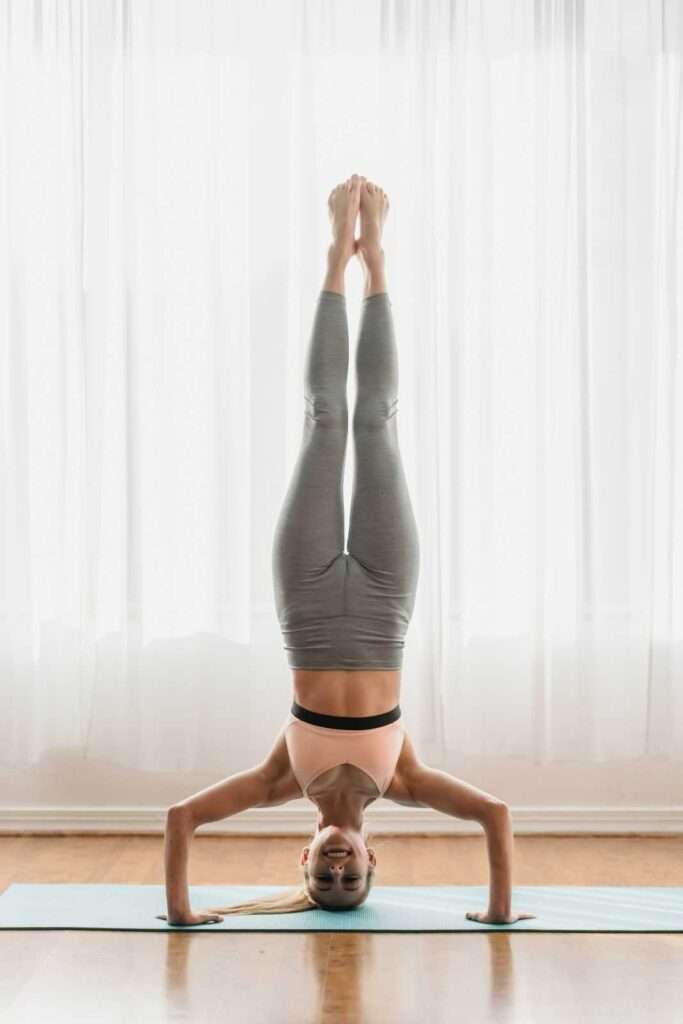
Sirsasana is an advanced inversion pose that builds strength, balance, and mental focus. With the support of your forearms and head, you lift your legs upward, balancing on the crown of your head. Your arms and shoulders provide stability. Headstand improves blood circulation to the brain, strengthens the upper body, enhances focus and concentration, and promotes a sense of calm and mental clarity.
Shoulder Stand (Sarvangasana):
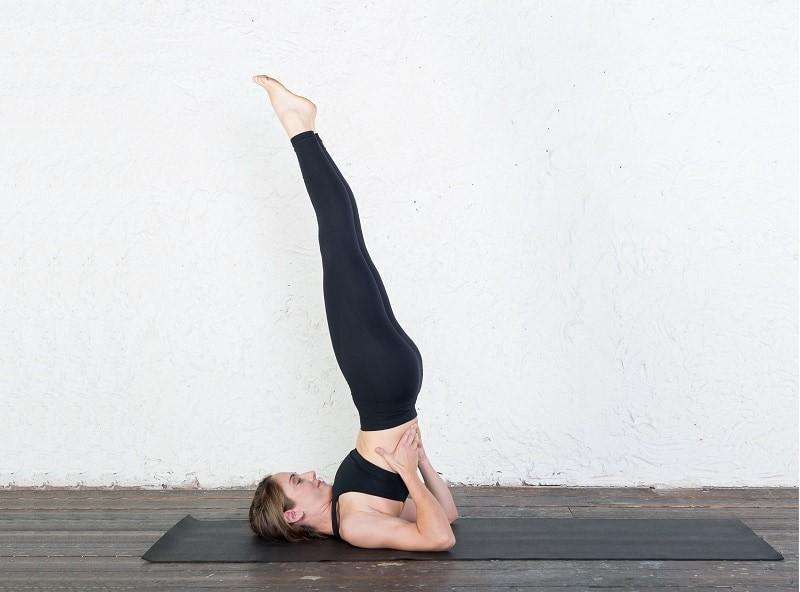
Sarvangasana is an inverted pose that invigorates the body and calms the mind. From a supine position, you lift your legs and torso, supporting your back with your hands. Your body is in a vertical position, and your weight is on your shoulders. Shoulder Stand improves blood circulation, strengthens the upper body and core, stimulates the thyroid gland, and promotes a sense of relaxation and rejuvenation.
Fish Pose (Matsyasana):
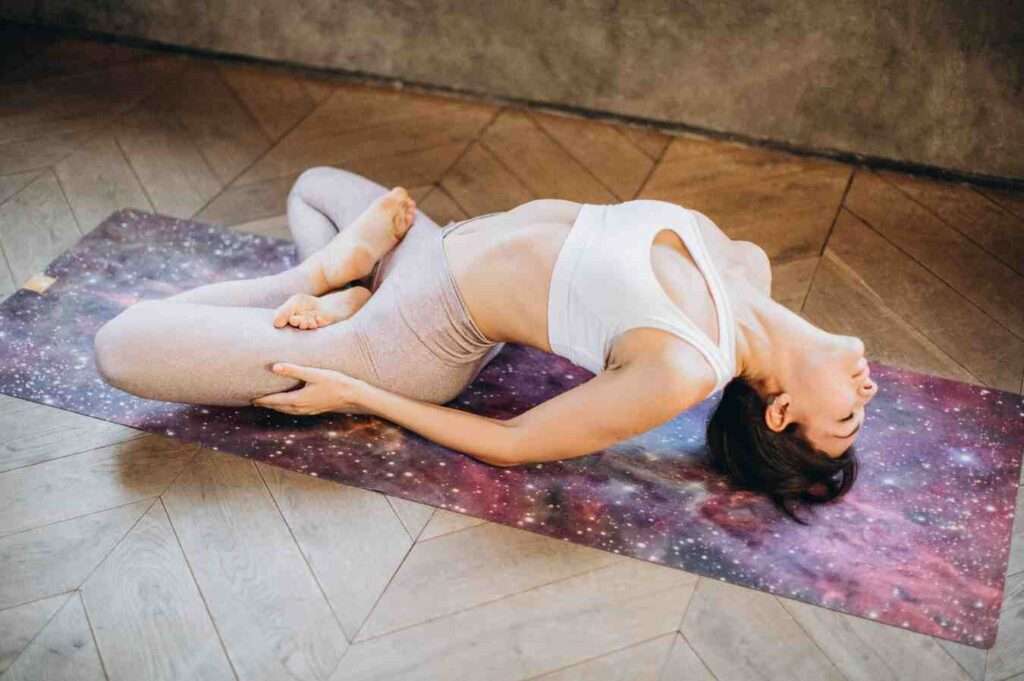
Matsyasana is a gentle backbend pose that opens the chest, stretches the front of the body, and stimulates the throat and heart chakras. Lying on your back, you lift your chest and arch your upper back, supporting yourself with your forearms and crown of the head. Fish Pose stretches the neck, shoulders, and chest, stimulates the respiratory and circulatory systems, and promotes emotional balance and compassion.
Camel Pose (Ustrasana):
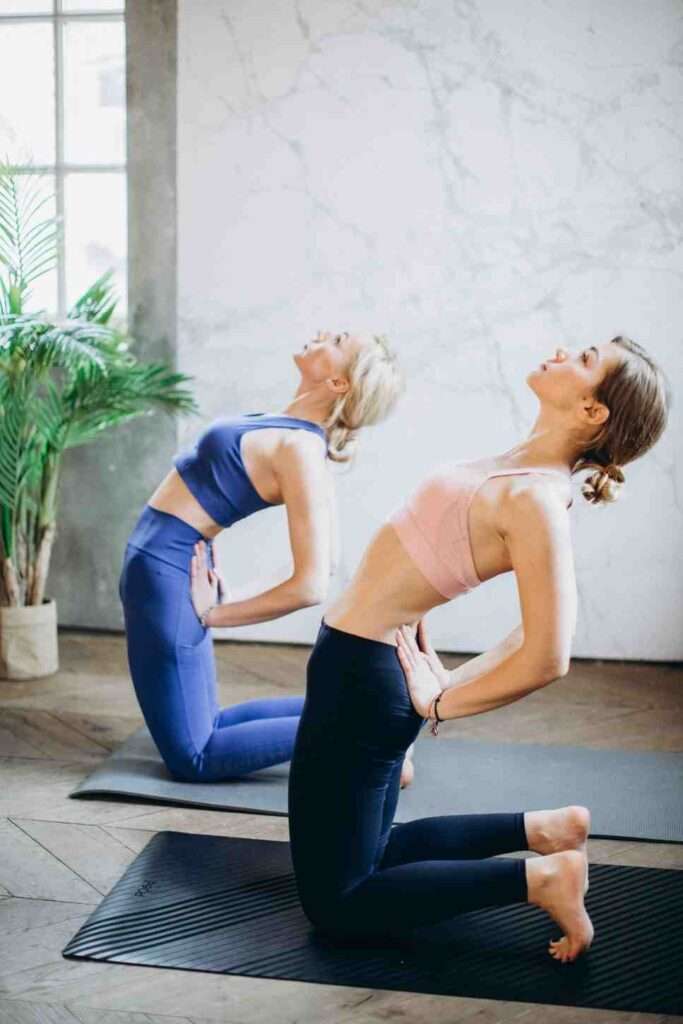
Ustrasana is a deep backbend pose that increases spinal flexibility, opens the chest, and energizes the body. Kneeling with your knees hip-width apart, you reach back to grasp your heels, while arching your back and lifting your chest forward. Camel Pose stretches the front of the body, strengthens the back muscles, improves digestion, and enhances emotional openness and courage.
Pigeon Pose (Eka Pada Rajakapotasana):
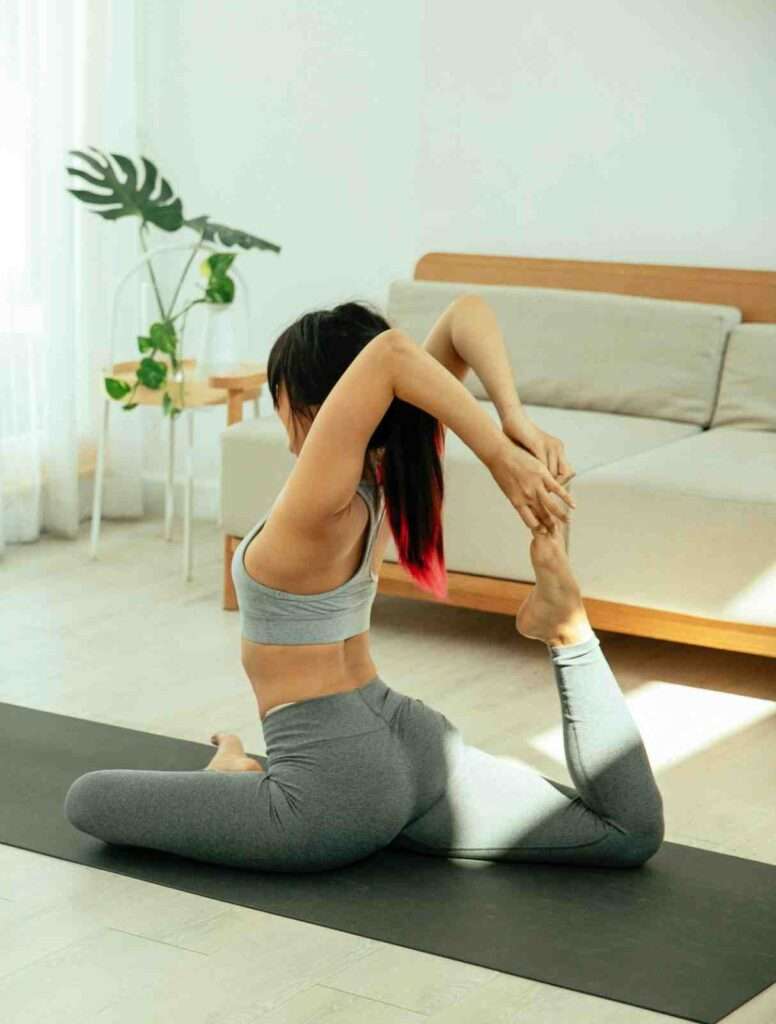
Eka Pada Rajakapotasana is a hip-opening pose that releases tension and tightness in the hips and lower back. Starting in a lunge position, you slide one leg forward and bend the knee, placing the shin and foot on the ground. The opposite leg extends back. Pigeon Pose stretches the hip flexors, glutes, and piriformis muscles, improves hip mobility, and promotes emotional release and balance.
Boat Pose (Navasana):
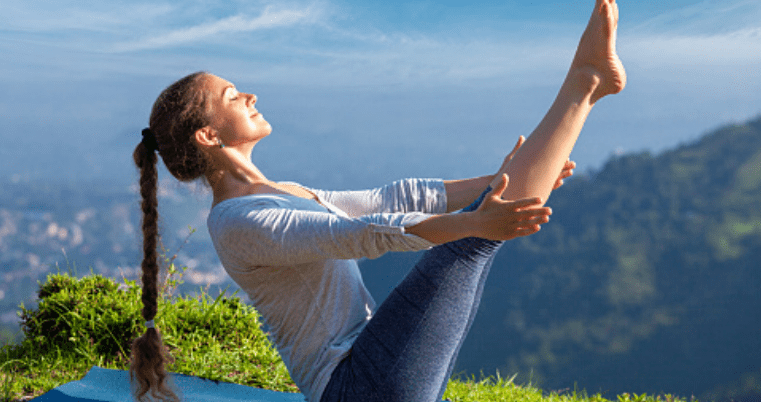
Navasana is a core-strengthening pose that targets the abdominal muscles and enhances balance and stability. Sitting on the ground, you lean back slightly and lift your legs, balancing on your sitting bones. Your arms can be extended forward or alongside your body. Boat Pose strengthens the core, improves digestion, stimulates the abdominal organs, and cultivates focus and inner strength.
Crow Pose (Bakasana):
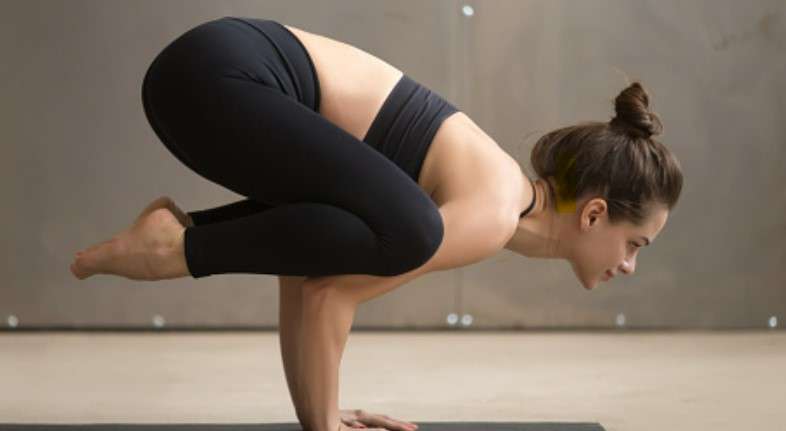
Bakasana is an arm balance pose that develops upper body strength, core stability, and concentration. Starting in a squat position, you place your hands on the ground in front of you, shoulder-width apart. Your knees rest on the backs of your upper arms, and you lean forward, shifting your weight onto your hands. Crow Pose strengthens the arms and wrists, tones the core muscles, improves balance, and cultivates focus and mental clarity.
Triangle Pose (Trikonasana):
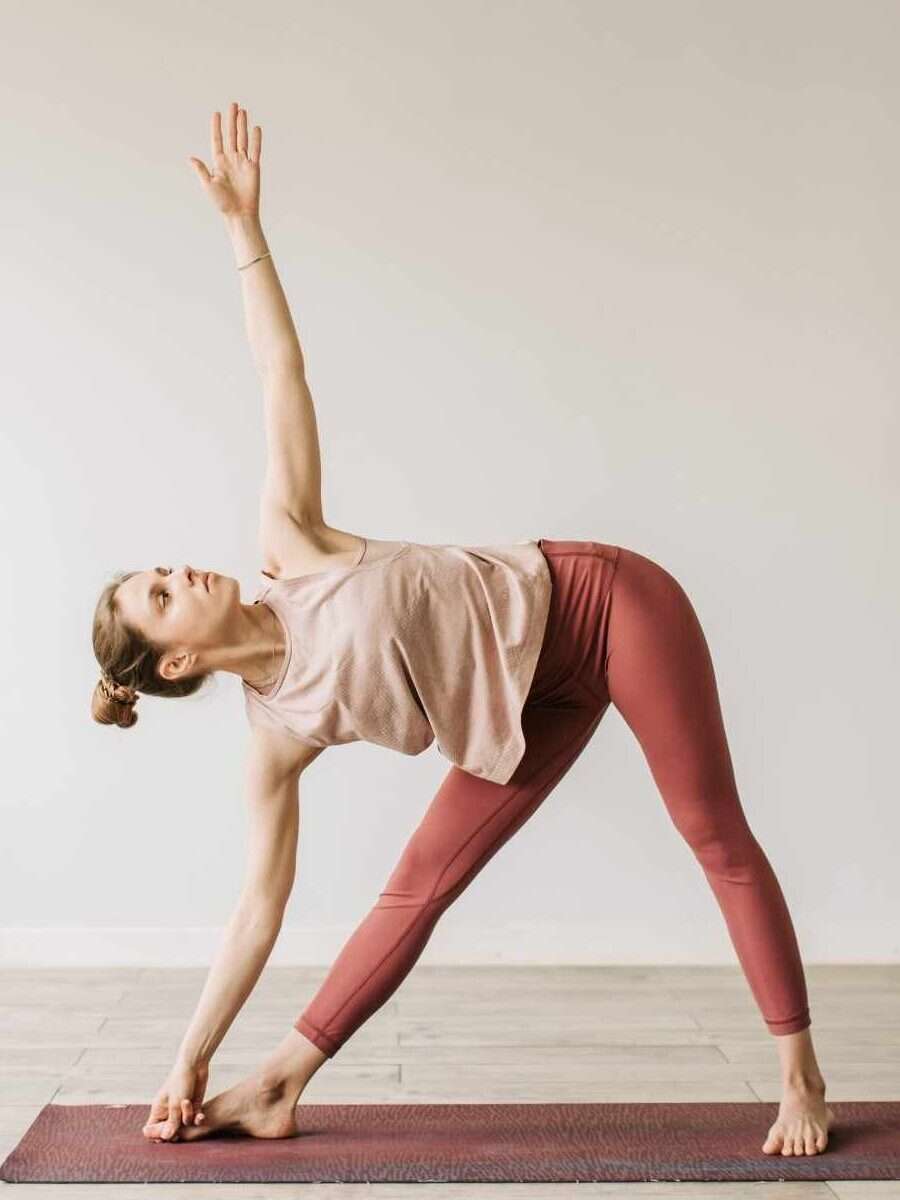
Trikonasana is a standing pose that stretches the sides of the body, opens the chest, and improves spinal flexibility. From a wide-legged stance, you extend one arm to the side and reach forward, tilting your torso to the side. The opposite arm reaches upward. Triangle Pose stretches the hamstrings, hips, and side body, strengthens the legs, improves balance, and stimulates the abdominal organs.
Extended Triangle Pose (Utthita Trikonasana):
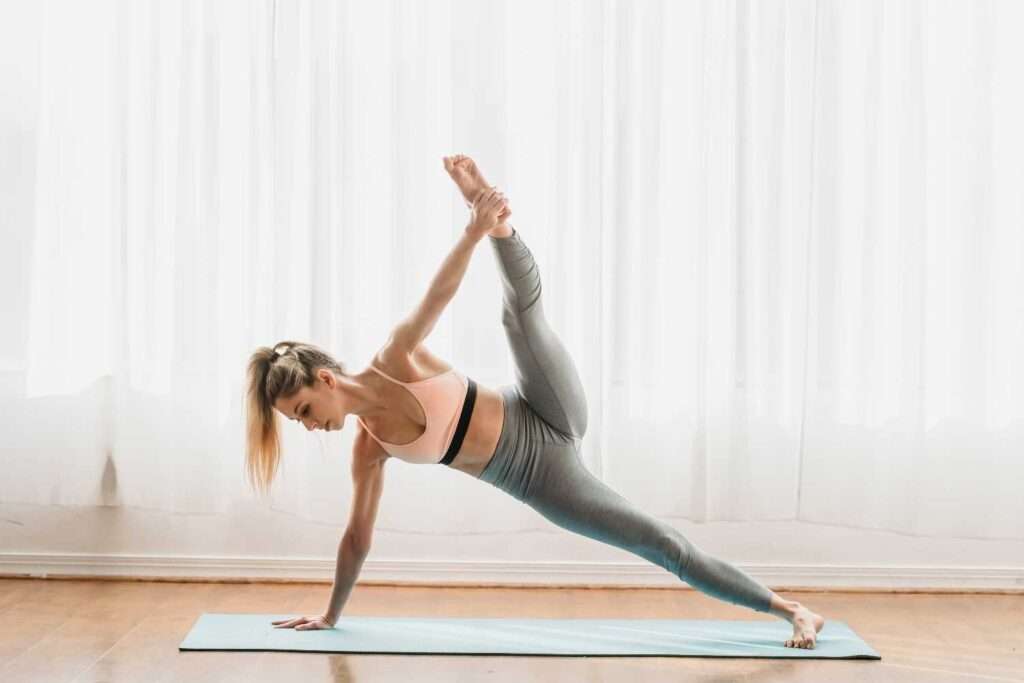
Utthita Trikonasana is a variation of Triangle Pose that deepens the stretch and strengthens the legs, hips, and core. Starting in Trikonasana, you reach one arm down towards the shin or the floor, while the opposite arm extends upward. Extended Triangle Pose provides a deeper stretch for the hamstrings, opens the hips, strengthens the legs, and improves overall body alignment and stability.
Eagle Pose (Garudasana):
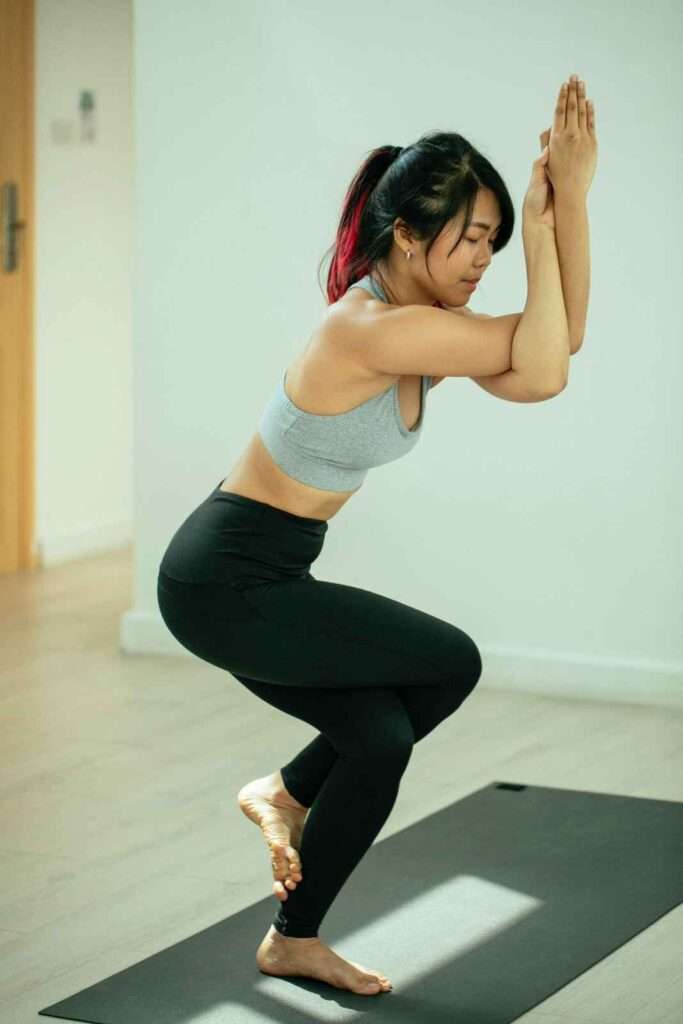
Garudasana is a balancing pose that promotes focus, concentration, and flexibility. Starting in Mountain Pose, you cross one thigh over the other, hooking the foot behind the calf if possible. You then cross your arms at the elbows, with one forearm resting on top of the other, and bring your hands together. Eagle Pose strengthens the legs and core, improves balance, enhances joint mobility, and cultivates a sense of focus and inner harmony.
Lotus Pose (Padmasana):
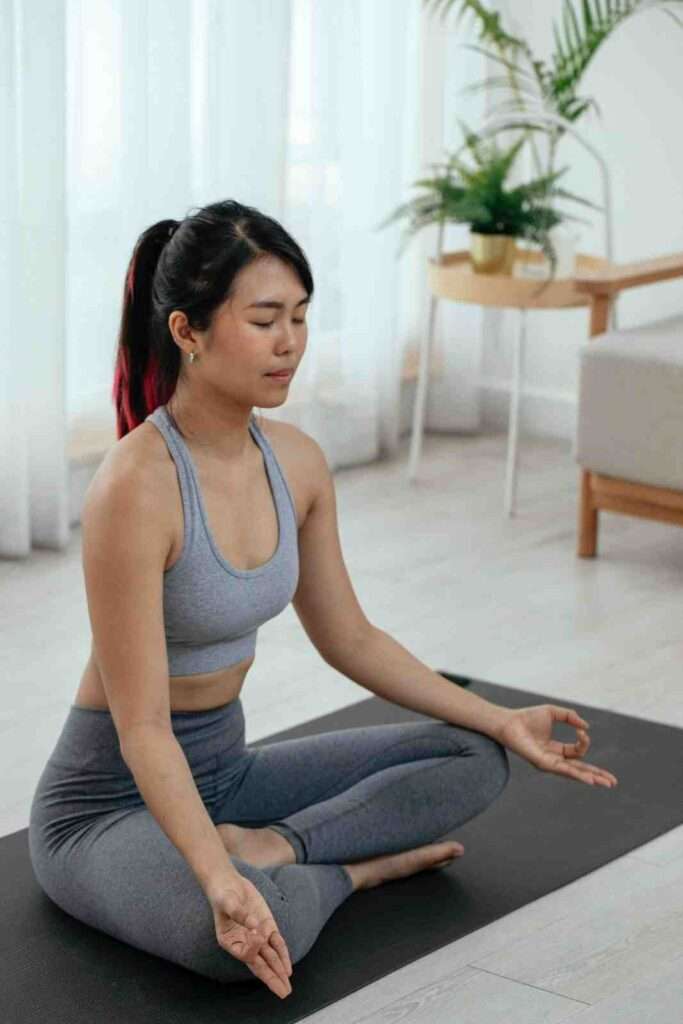
Padmasana is a seated meditation pose that promotes stillness, stability, and a sense of groundedness. Sitting on the ground, you cross your legs, placing each foot on the opposite thigh, with the soles facing upward. Lotus Pose opens the hips, lengthens the spine, improves posture, and facilitates deep relaxation and meditation.
Fisherman’s Pose (Ardha Matsyendrasana):
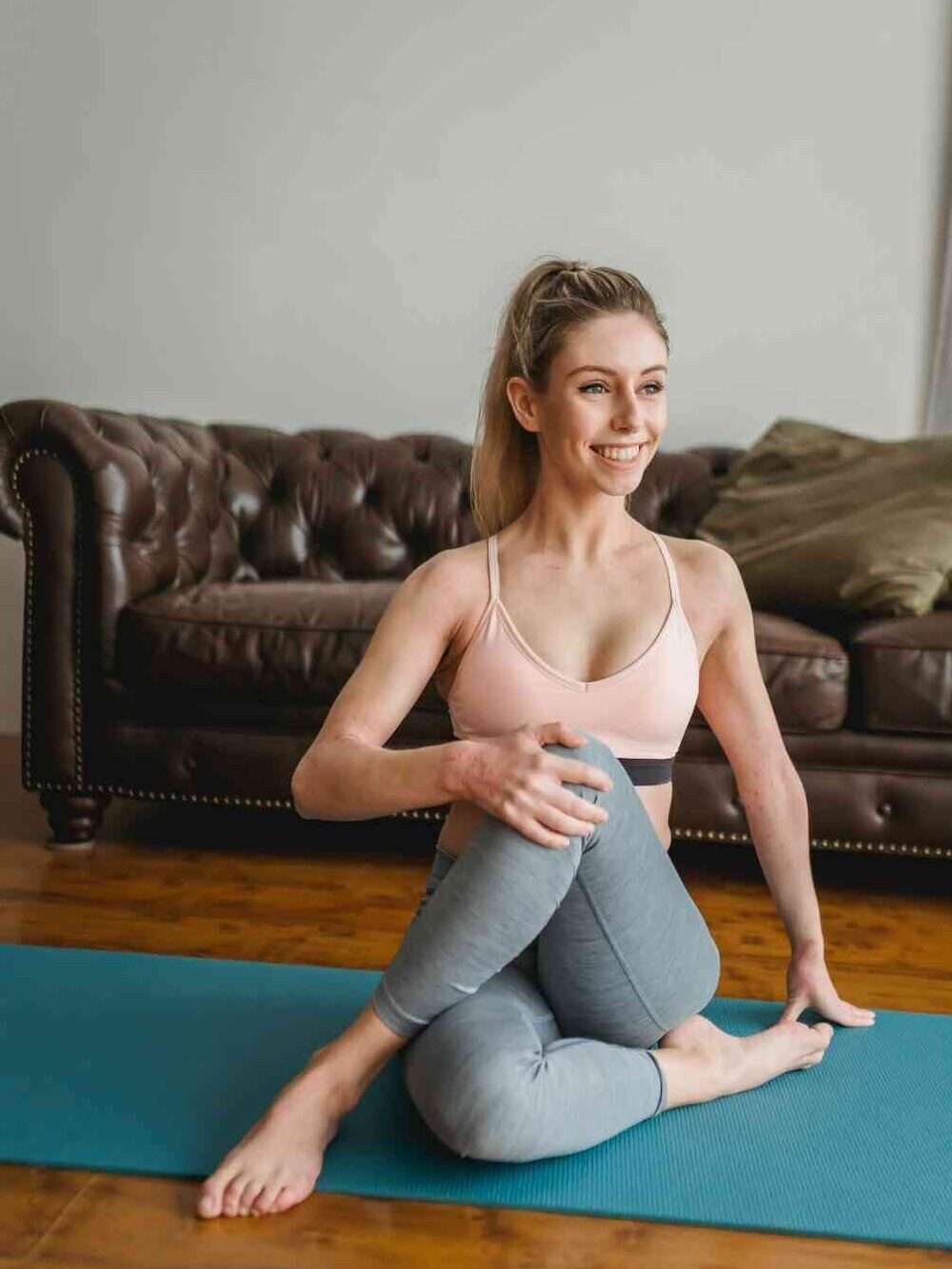
Ardha Matsyendrasana is a seated spinal twist that stretches the spine, hips, and shoulders. Sitting with your legs extended in front of you, you bend one knee and place the foot on the ground outside the opposite hip. The opposite arm wraps around the bent knee, and you twist your torso to the side. Fisherman’s Pose increases spinal flexibility, stimulates digestion, and promotes a sense of detoxification and rejuvenation.
Revolved Triangle Pose (Parivrtta Trikonasana):
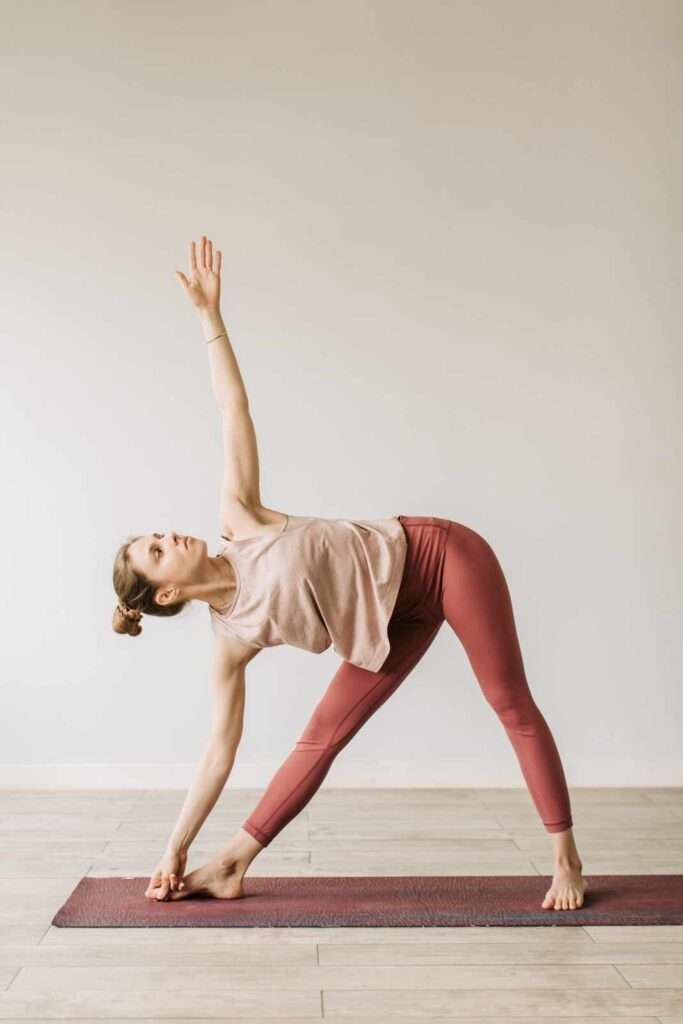
Parivrtta Trikonasana is a twisting pose that stretches the hamstrings, hips, and shoulders while improving balance and spinal mobility. Starting in Triangle Pose, you rotate your torso and reach one arm up toward the ceiling, while the other hand rests on the floor or a block. Revolved Triangle Pose strengthens the legs, stimulates digestion, detoxifies the body, and cultivates mental clarity and focus.
Revolved Side Angle Pose (Parivrtta Parsvakonasana):
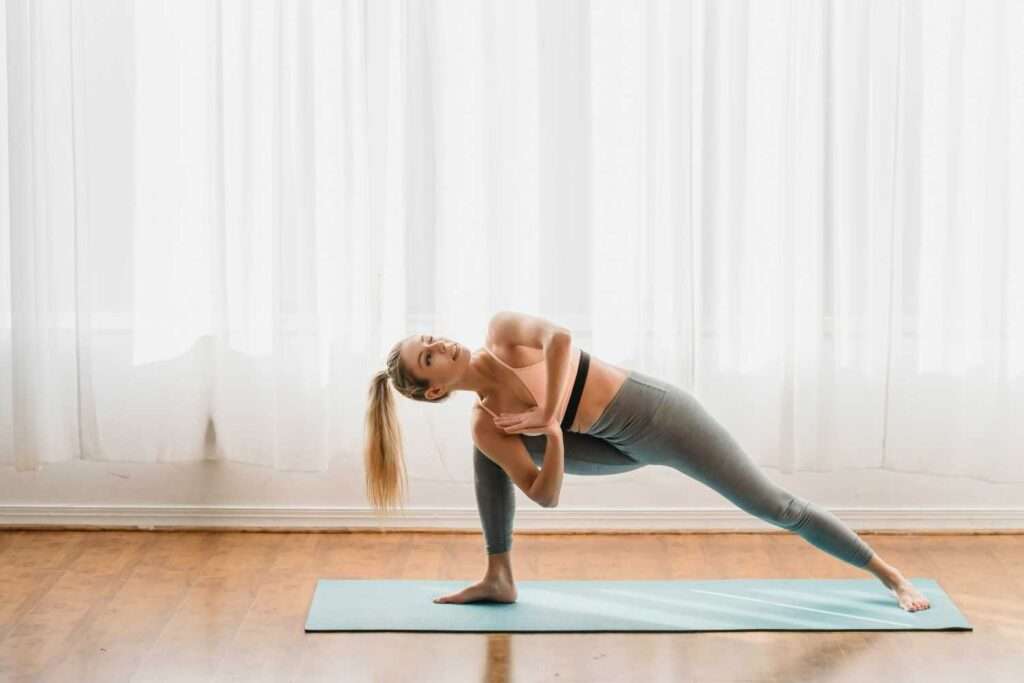
This standing twist pose involves bending the front knee and placing the opposite hand on the ground while twisting the torso and extending the other arm upward. It stretches the hips, hamstrings, and shoulders, improves spinal mobility, and stimulates digestion.
Side Plank Pose (Vasisthasana):
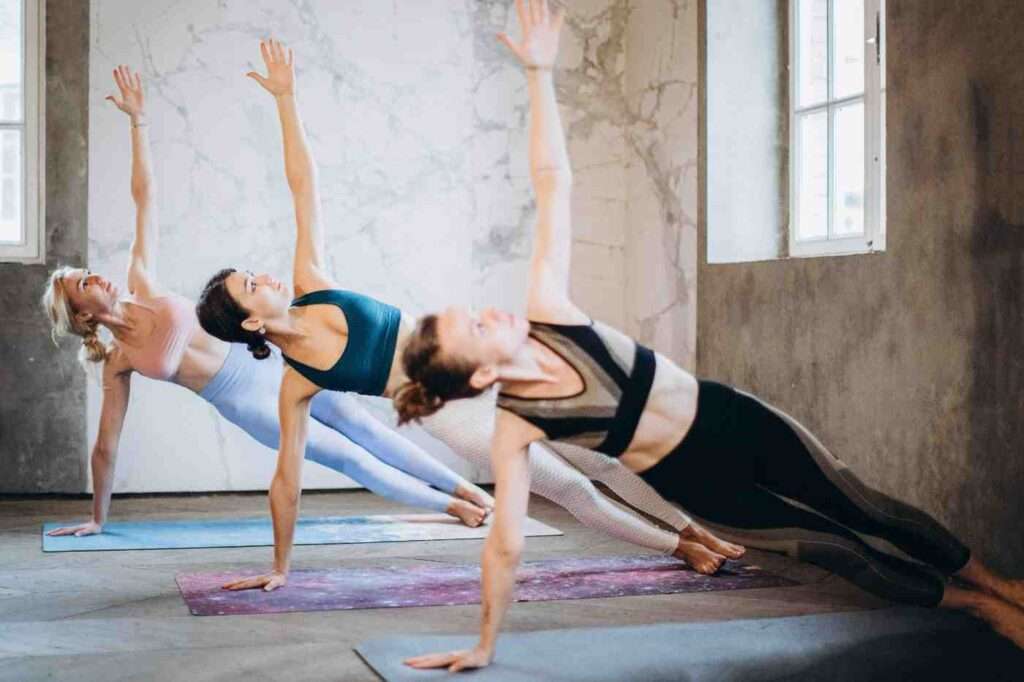
This balancing pose strengthens the wrists, arms, and core muscles. From a plank position, you shift your weight onto one hand and the outer edge of the foot, extending the other arm upward. Side Plank improves stability, tones the abdominal muscles, and enhances focus and concentration.
Upward Facing Dog (Urdhva Mukha Svanasana):
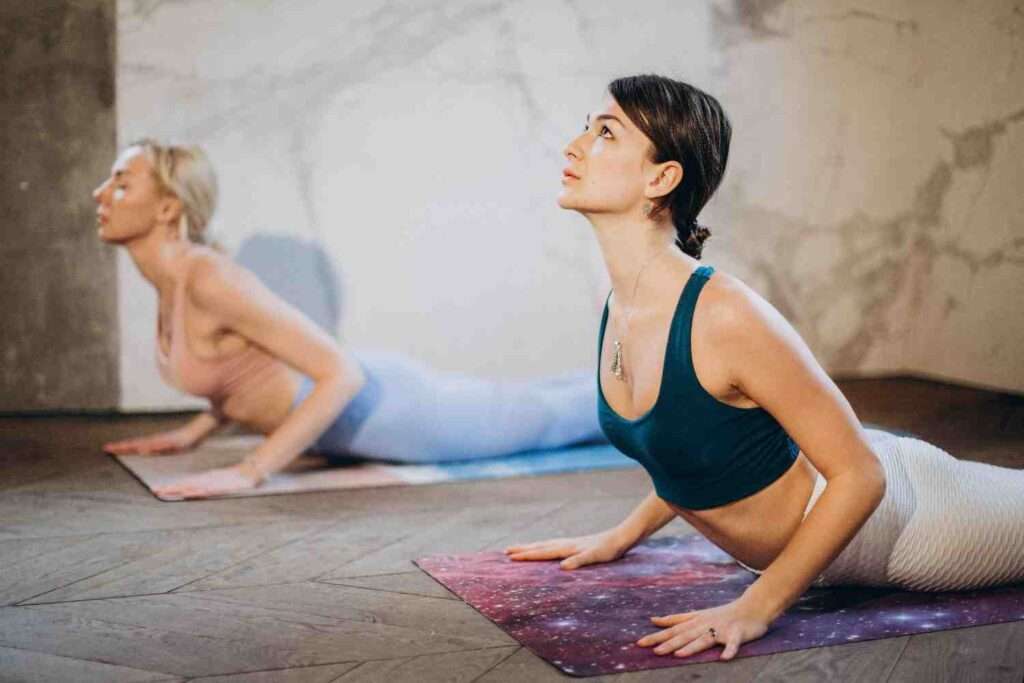
This backbend pose is performed by lying face down and pressing the hands into the ground to lift the chest and upper body. Upward Facing Dog strengthens the arms, shoulders, and back muscles, stretches the chest and abdomen, improves posture, and energizes the body.
Seated Twist (Ardha Matsyendrasana):
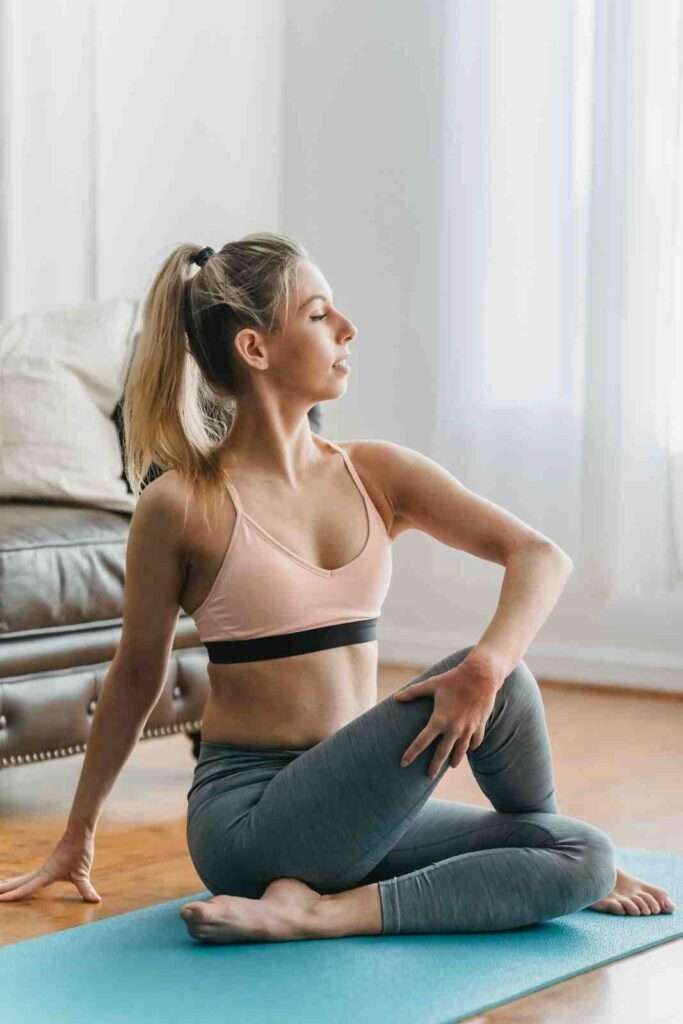
This seated pose involves twisting the spine while sitting on the ground, with one leg bent and the opposite foot placed outside the bent knee. Seated Twist stretches the spine, hips, and shoulders, stimulates digestion, detoxifies the body, and increases spinal mobility.
Corpse Pose (Savasana):
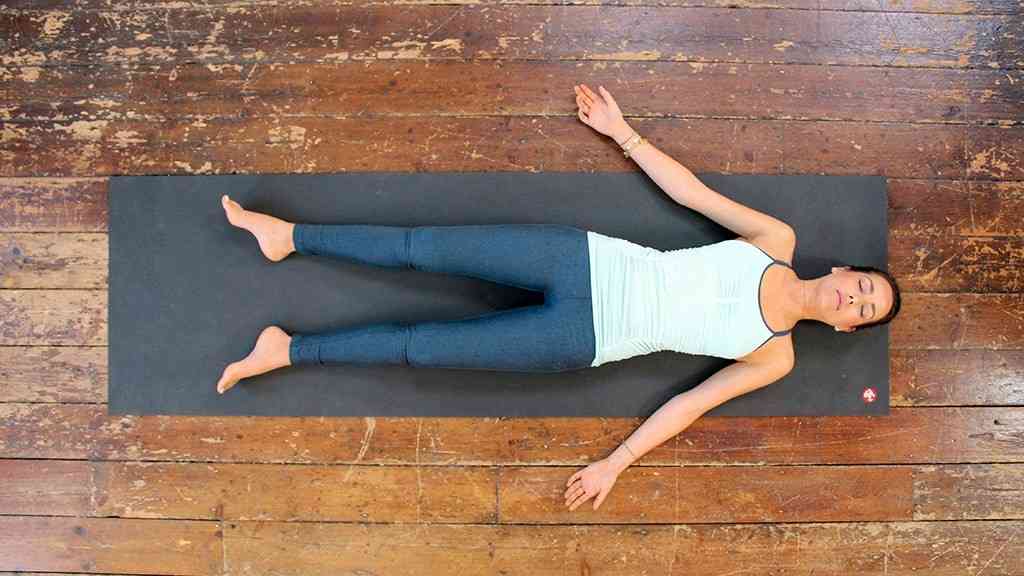
Corpse Pose is a relaxation pose performed by lying flat on your back with your limbs relaxed. It is typically practiced at the end of a yoga session to promote deep relaxation, reduce stress, and integrate the benefits of the practice.
Garland Pose (Malasana):
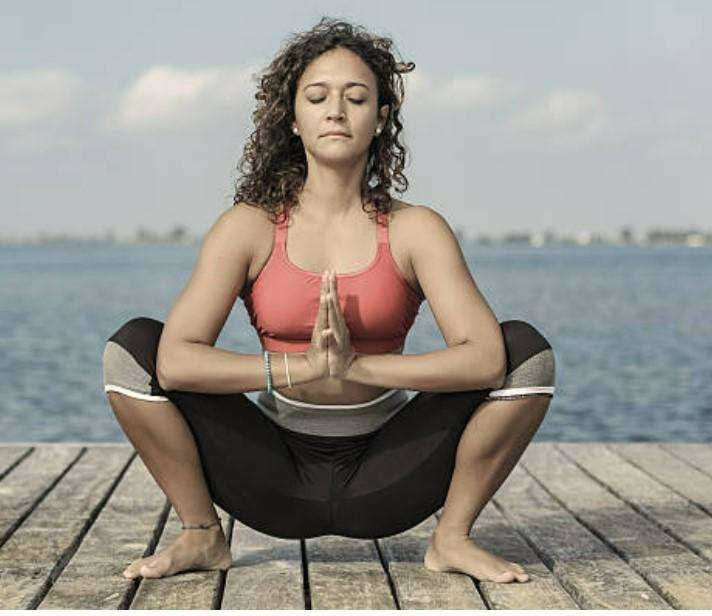
Malasana is a deep squat pose where you lower your hips toward the ground with your feet flat and knees wide apart. Garland Pose stretches the hips, groin, and ankles, strengthens the lower body, improves digestion, and helps release tension in the lower back.
Revolved Chair Pose (Parivrtta Utkatasana):
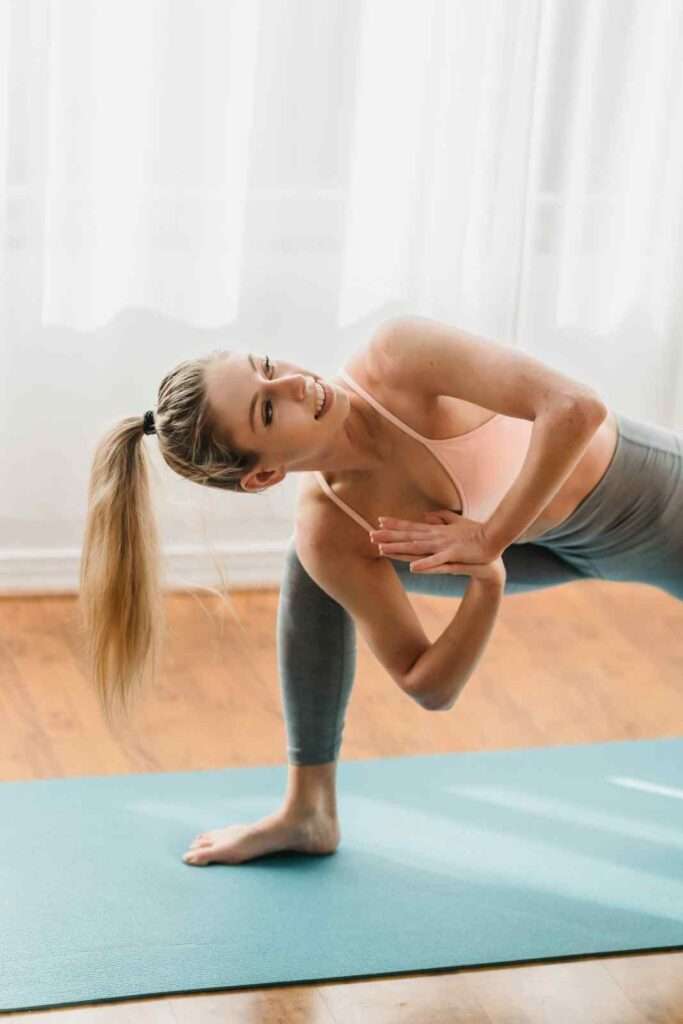
This twisting variation of Chair Pose involves sitting back into a squat position and twisting the torso to one side while bringing the hands to prayer position. Revolved Chair Pose strengthens the legs, opens the chest and shoulders, aids digestion, and cultivates balance and focus.
Extended Hand-to-Big-Toe Pose (Utthita Hasta Padangusthasana):
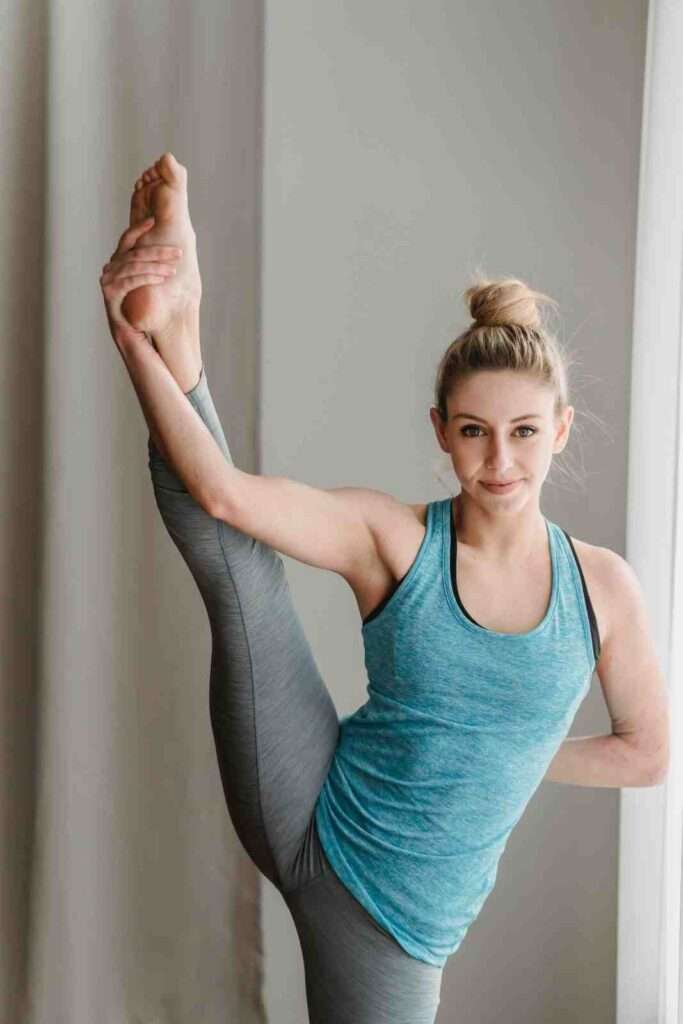
This balancing pose involves extending one leg forward while holding onto the big toe with the hand. Extended Hand-to-Big-Toe Pose improves balance, stretches the hamstrings and calves, strengthens the ankles, and cultivates mental focus.
Firefly Pose (Tittibhasana):
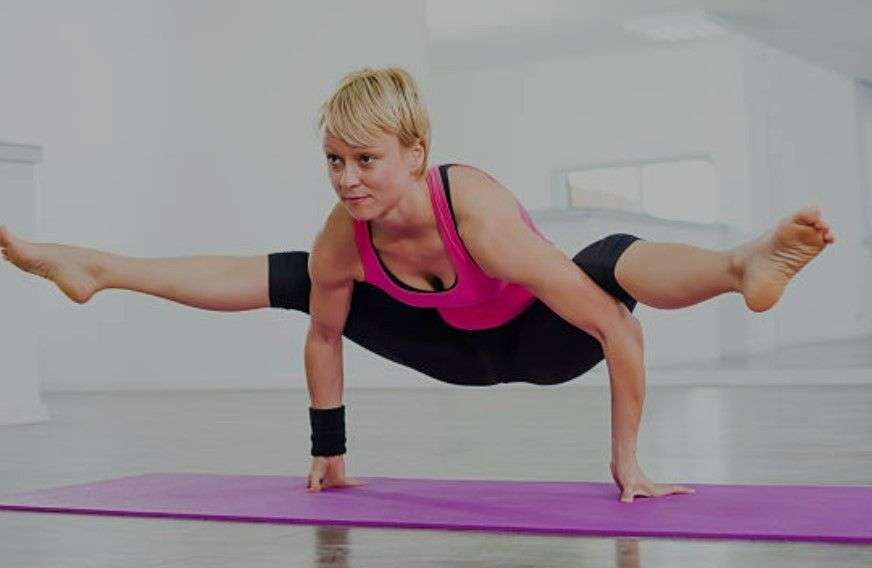
Firefly Pose is an arm balance pose where you squat down and place your hands on the ground, then lift your feet off the ground and straighten the legs. It strengthens the arms, wrists, and core, opens the hips, improves balance, and builds confidence.
Garland with Forward Fold (Malasana with Forward Fold):
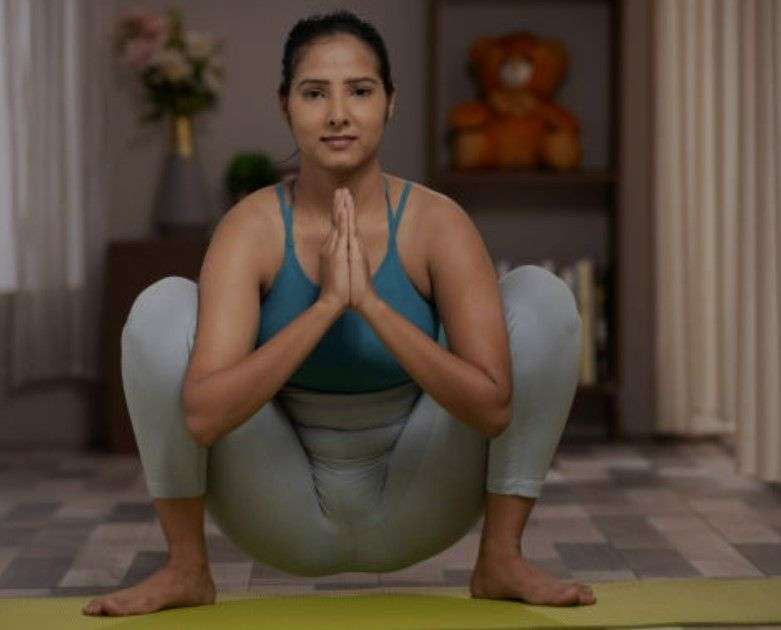
This variation of Garland Pose adds a forward fold by bringing the torso between the thighs in the deep squat position. It provides a deeper stretch for the hips, hamstrings, and lower back, increases flexibility, and calms the mind.
Revolved Half Moon Pose (Parivrtta Ardha Chandrasana):
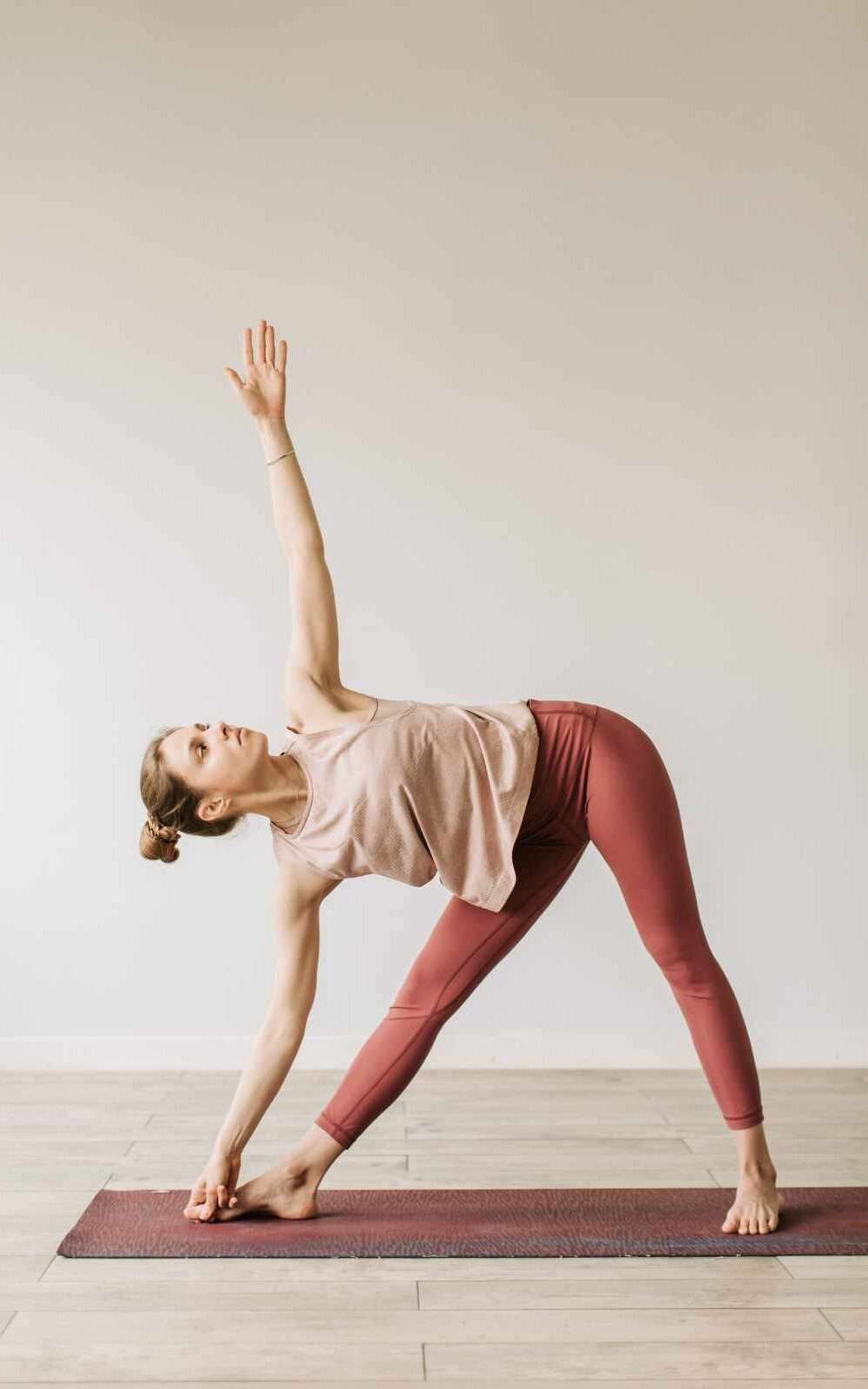
This balancing and twisting pose involves standing on one leg while extending the opposite leg backward and twisting the torso to one side, reaching the opposite arm toward the ground. Revolved Half Moon Pose strengthens the legs, improves balance and coordination, stretches the hamstrings and hips, and enhances spinal mobility.
Happy Baby Pose (Ananda Balasana):
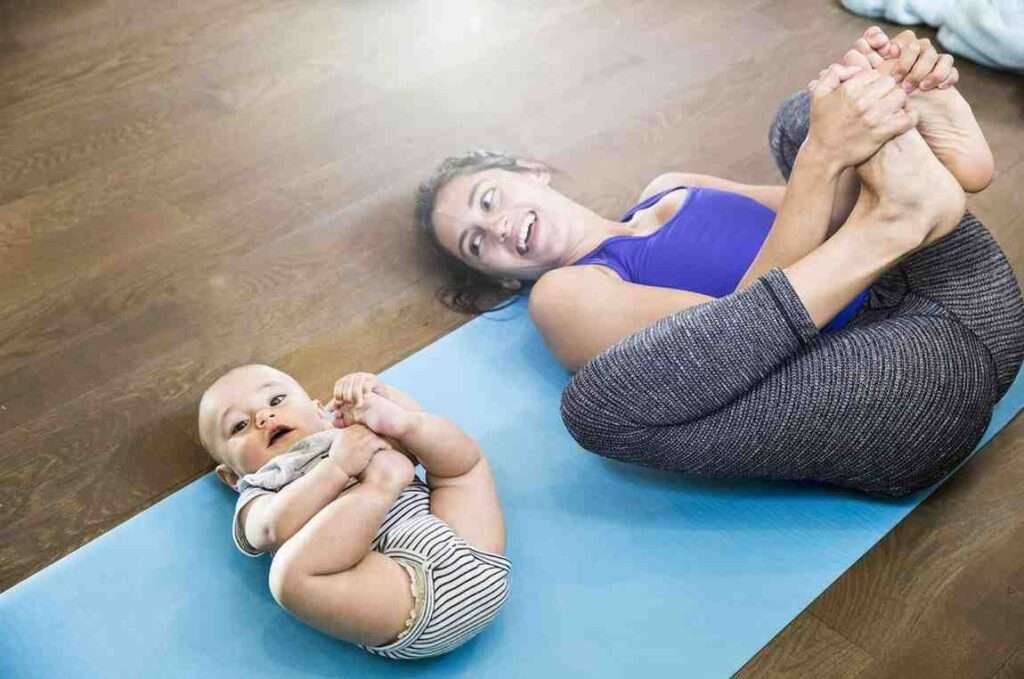
Happy Baby Pose is a gentle lying pose where you lie on your back and bring your knees toward your chest, grabbing the outer edges of the feet. It stretches the hips, groin, and lower back, relieves tension, and promotes a sense of relaxation and contentment.
Side-Reclining Leg Lift (Anantasana):
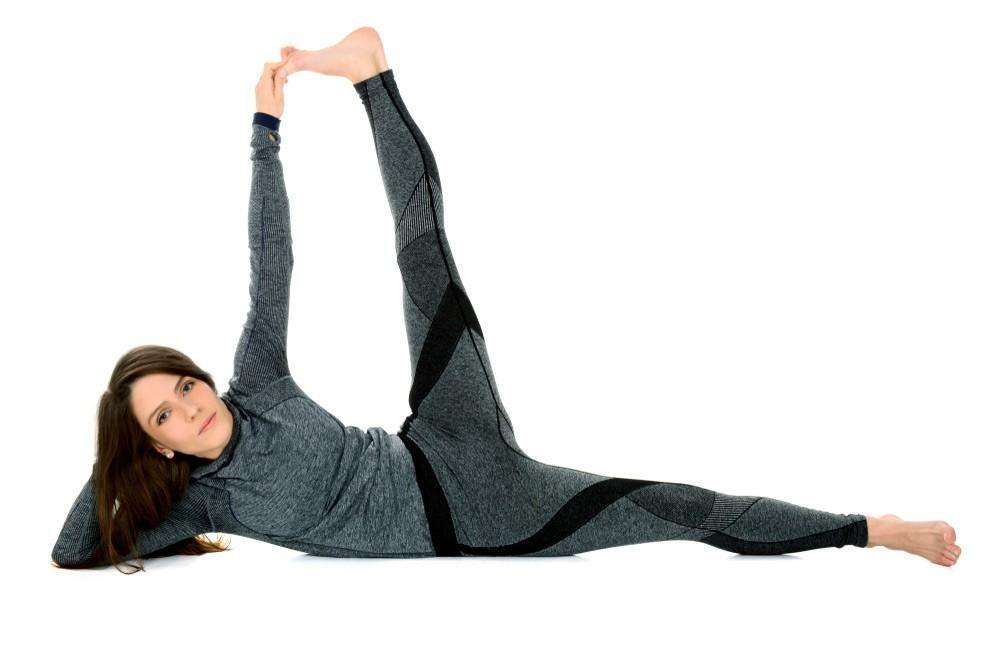
Also known as the “Sleeping Vishnu Pose,” this pose is performed by lying on one side and lifting the top leg upward. Side-Reclining Leg Lift strengthens the hips, inner thighs, and core muscles. It improves balance, stretches the hamstrings, and enhances overall body awareness.
Gate Pose (Parighasana):
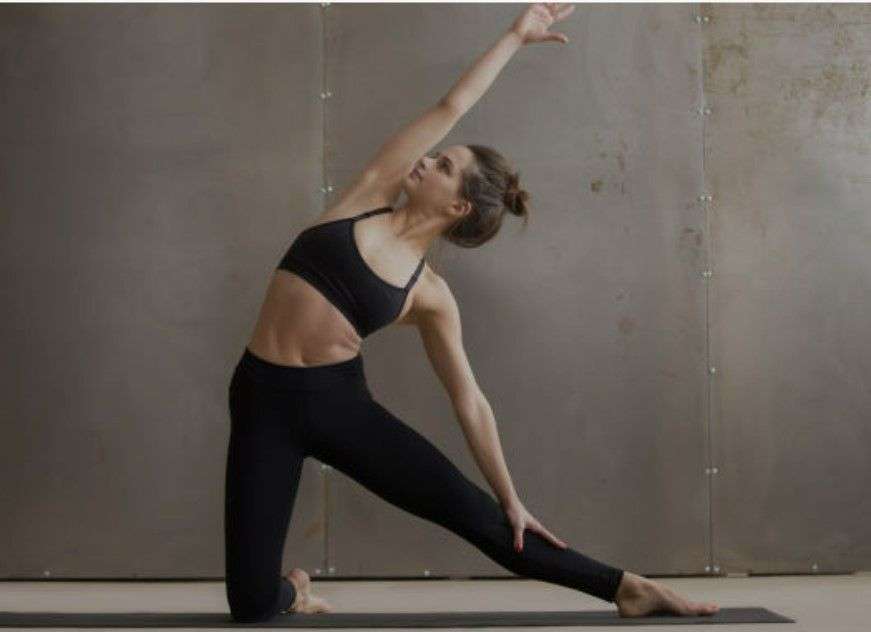
Gate Pose is a kneeling pose where you extend one leg to the side and reach the same-side arm overhead while maintaining a strong alignment with the other leg and arm. It stretches the side body, hips, and groin, improves flexibility, and stimulates the abdominal organs, promoting digestion.
Revolved Side Angle Pose (Parivrtta Parsvakonasana):
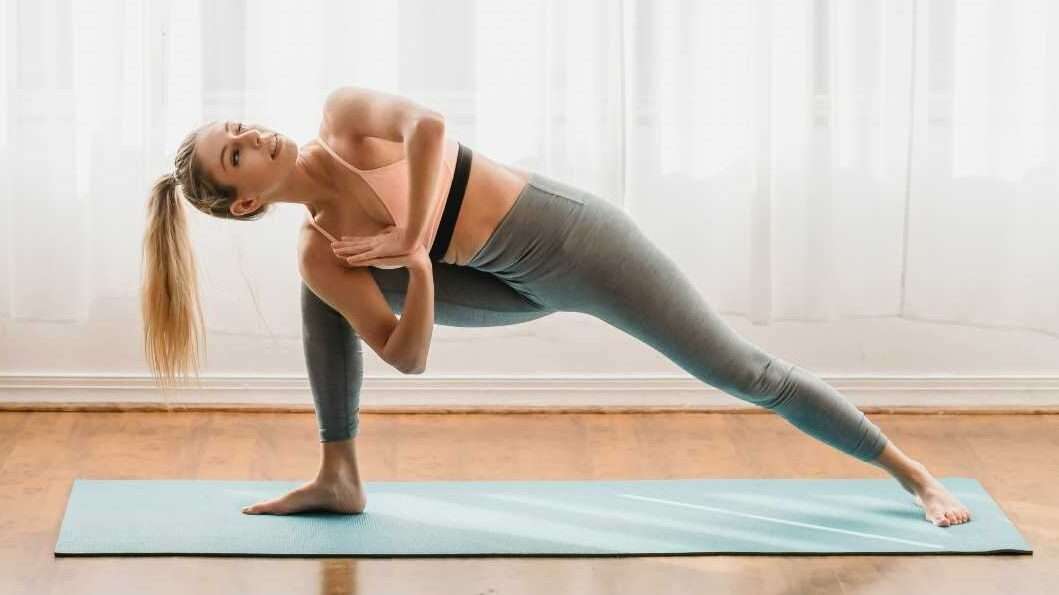
This standing twist pose involves a deep lunge with one knee bent and the opposite elbow placed outside the bent knee, while the other arm extends upward. Revolved Side Angle Pose strengthens the legs, stretches the hips and spine, improves digestion, and cultivates balance and concentration.
Sleeping Pigeon Pose (Sucirandhrasana):
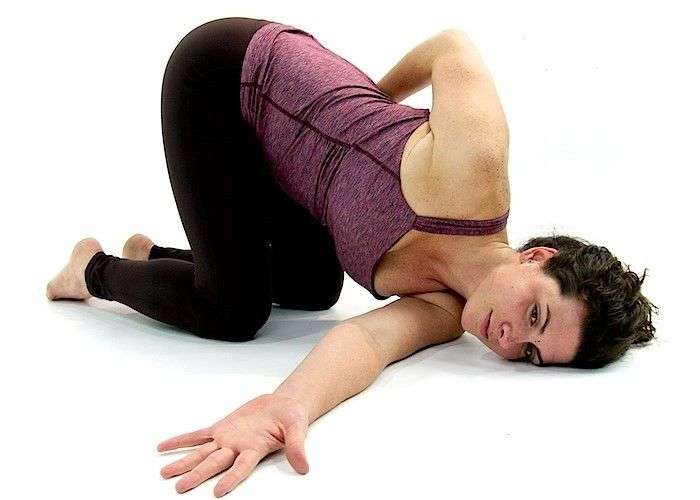
Also known as the “Thread the Needle Pose,” Sleeping Pigeon Pose is a hip-opening pose performed by bending one knee and placing the ankle on the opposite thigh, then gently lowering the body forward. It releases tension in the hips and buttocks, improves hip mobility, and enhances relaxation.
Half Lord of the Fishes Pose (Ardha Matsyendrasana):
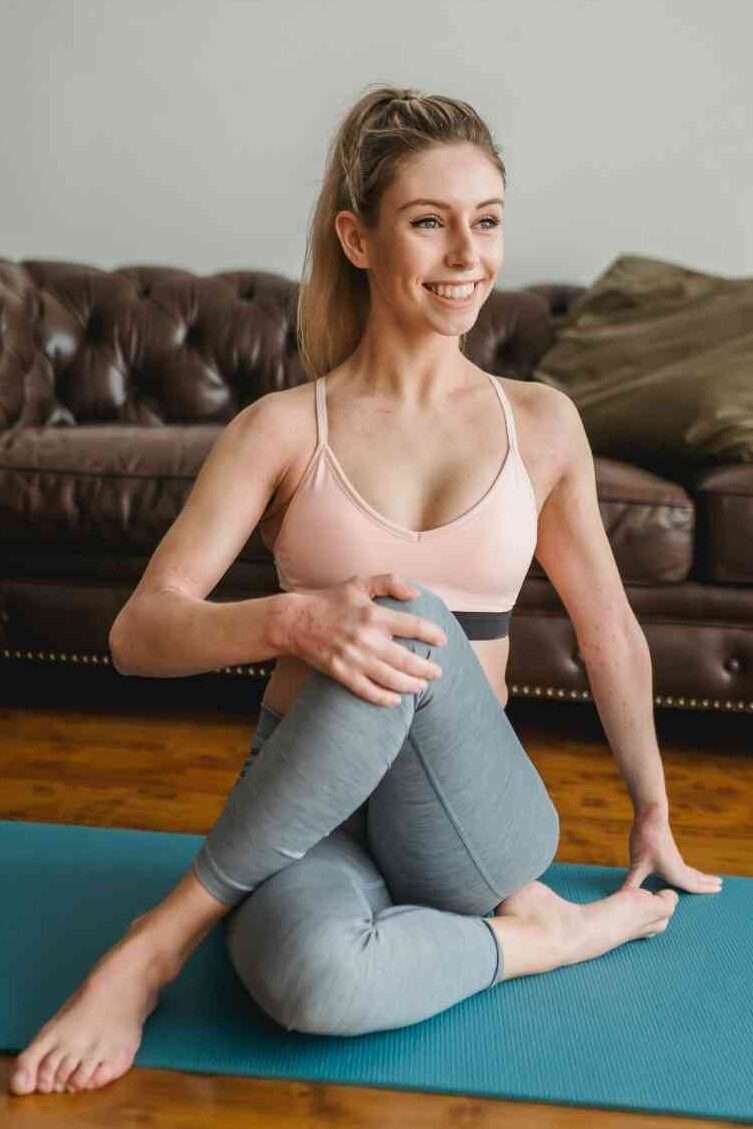
This seated twist pose involves crossing one leg over the other and twisting the torso while hugging the knee with the opposite arm. Half Lord of the Fishes Pose increases spinal flexibility, stimulates digestion, massages the abdominal organs, and relieves tension in the back and neck.
Revolved Head-to-Knee Pose (Parivrtta Janu Sirsasana):
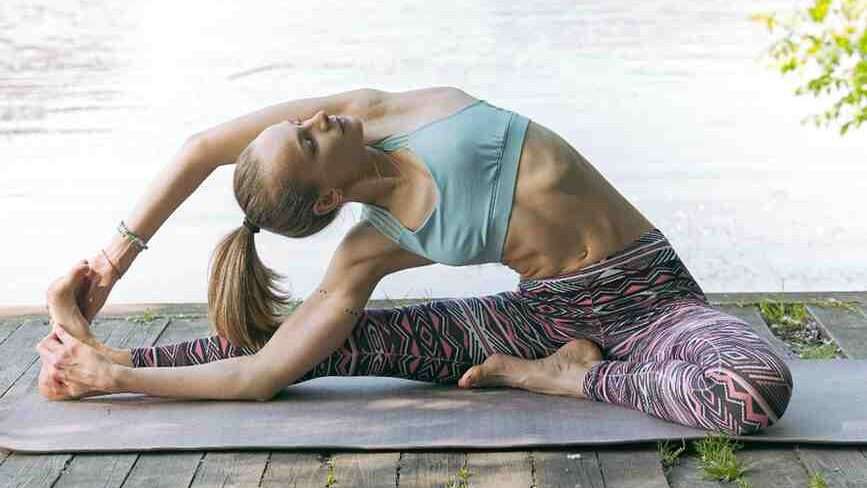
This seated twist pose is performed by sitting with one leg extended, the other foot against the inner thigh, and twisting the torso toward the extended leg while reaching for the foot. Revolved Head-to-Knee Pose stretches the spine, hamstrings, and shoulders, massages the abdominal organs, and improves digestion.
Cow Face Pose (Gomukhasana):
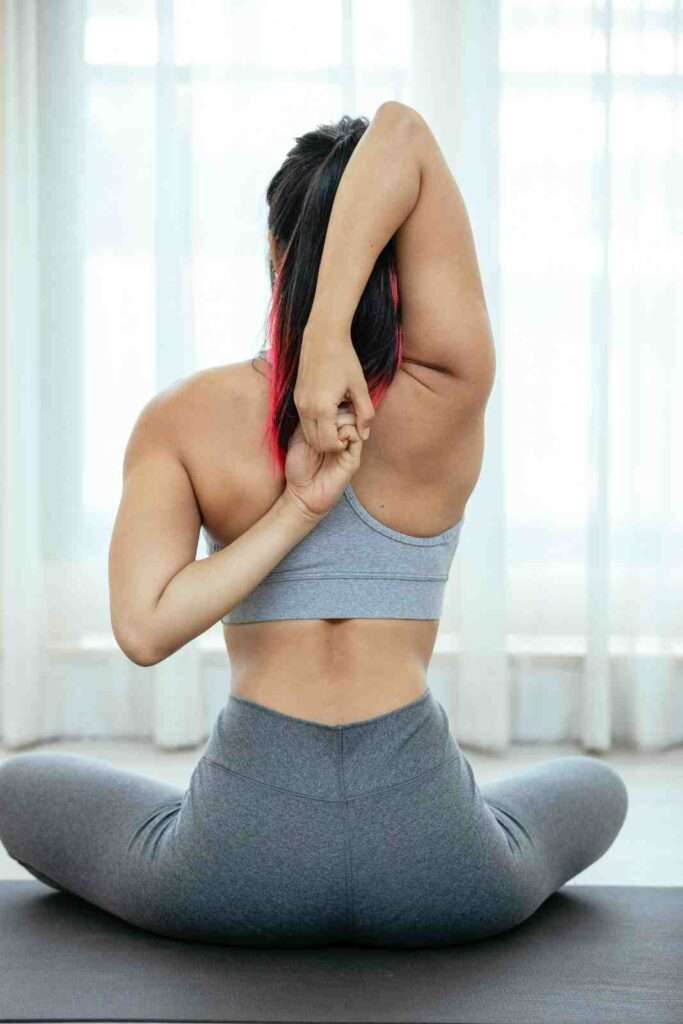
Cow Face Pose is a seated pose where you stack one knee on top of the other and bring the opposite arm behind your back, attempting to clasp the fingers. It stretches the hips, shoulders, and chest, improves posture, and relieves tension in the upper body.
Reclining Bound Angle Pose (Supta Baddha Konasana):
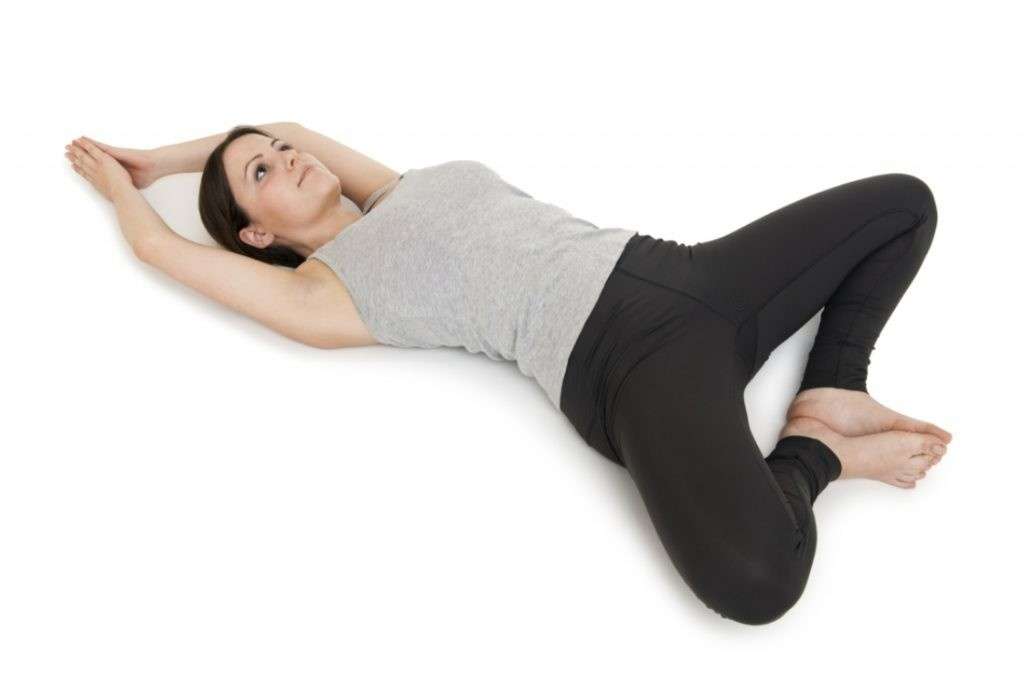
This reclined pose involves lying on your back, bringing the soles of the feet together, and allowing the knees to drop outward. Reclining Bound Angle Pose opens the hips and groin, relaxes the body and mind, and stimulates blood circulation.
Extended Puppy Pose (Uttana Shishosana):
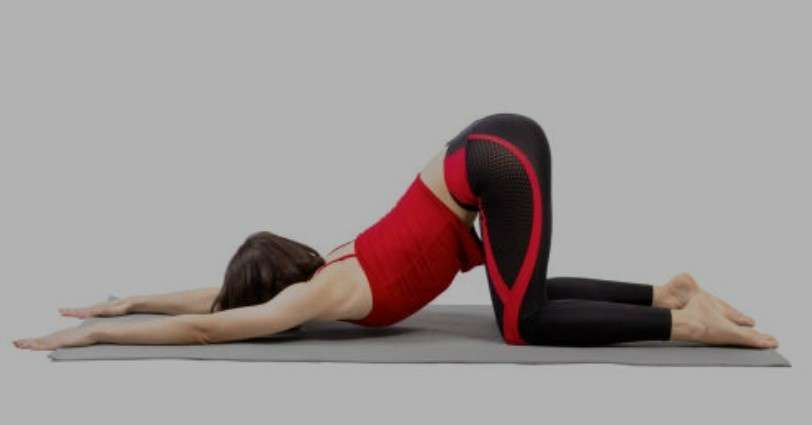
Extended Puppy Pose is a variation of Child’s Pose where you extend your arms forward, lowering the chest toward the ground while keeping the hips elevated. It stretches the spine, shoulders, and arms, releases tension in the upper back, and promotes relaxation.
Wide-Legged Forward Bend (Prasarita Padottanasana):
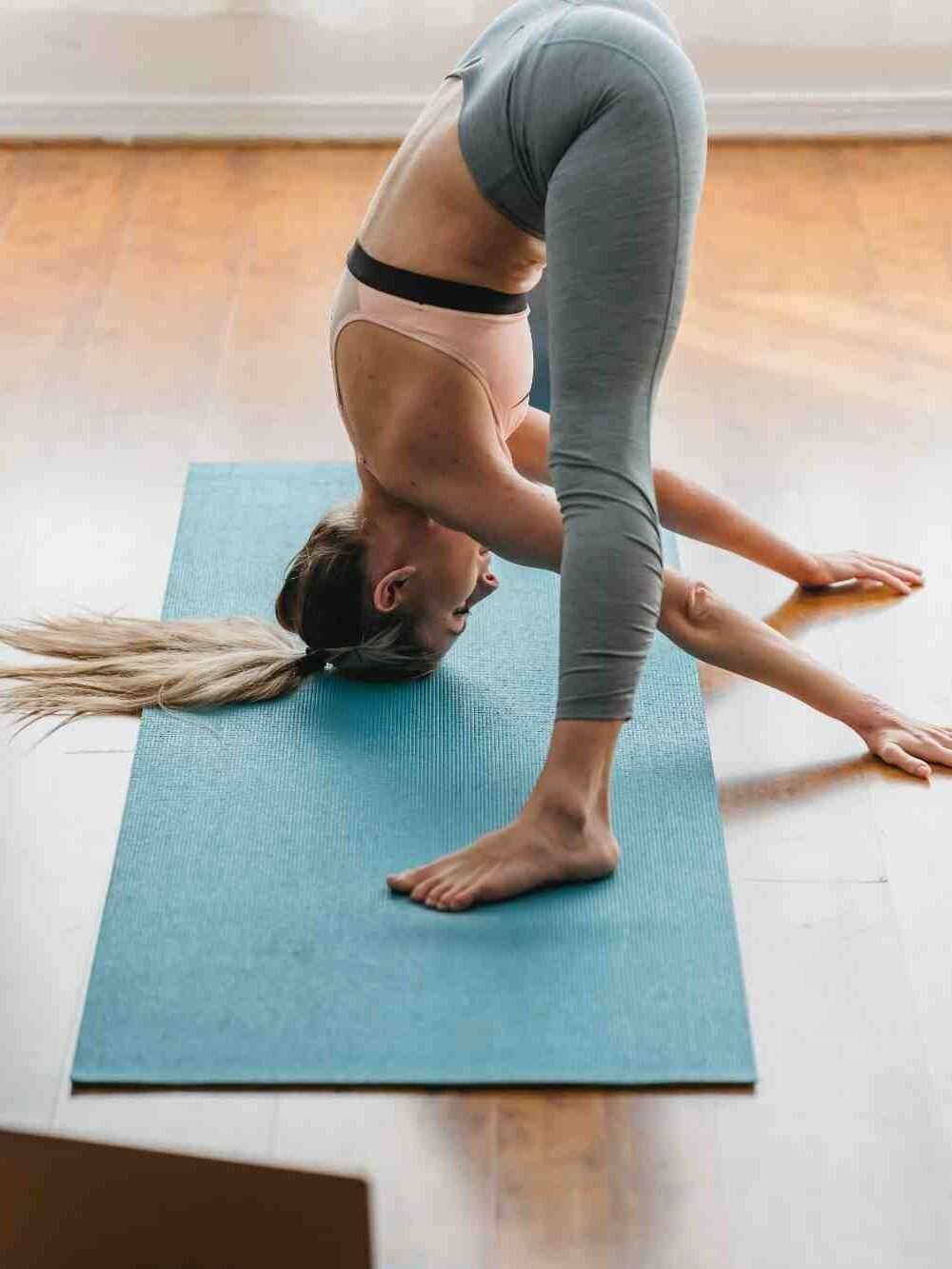
This standing forward bend involves stepping the feet wide apart, hinging forward at the hips, and bringing the hands to the ground or grabbing the ankles. Wide-Legged Forward Bend stretches the hamstrings, calves, and inner thighs, strengthens the legs, and calms the mind.
Revolved Extended Triangle Pose (Parivrtta Utthita Trikonasana):
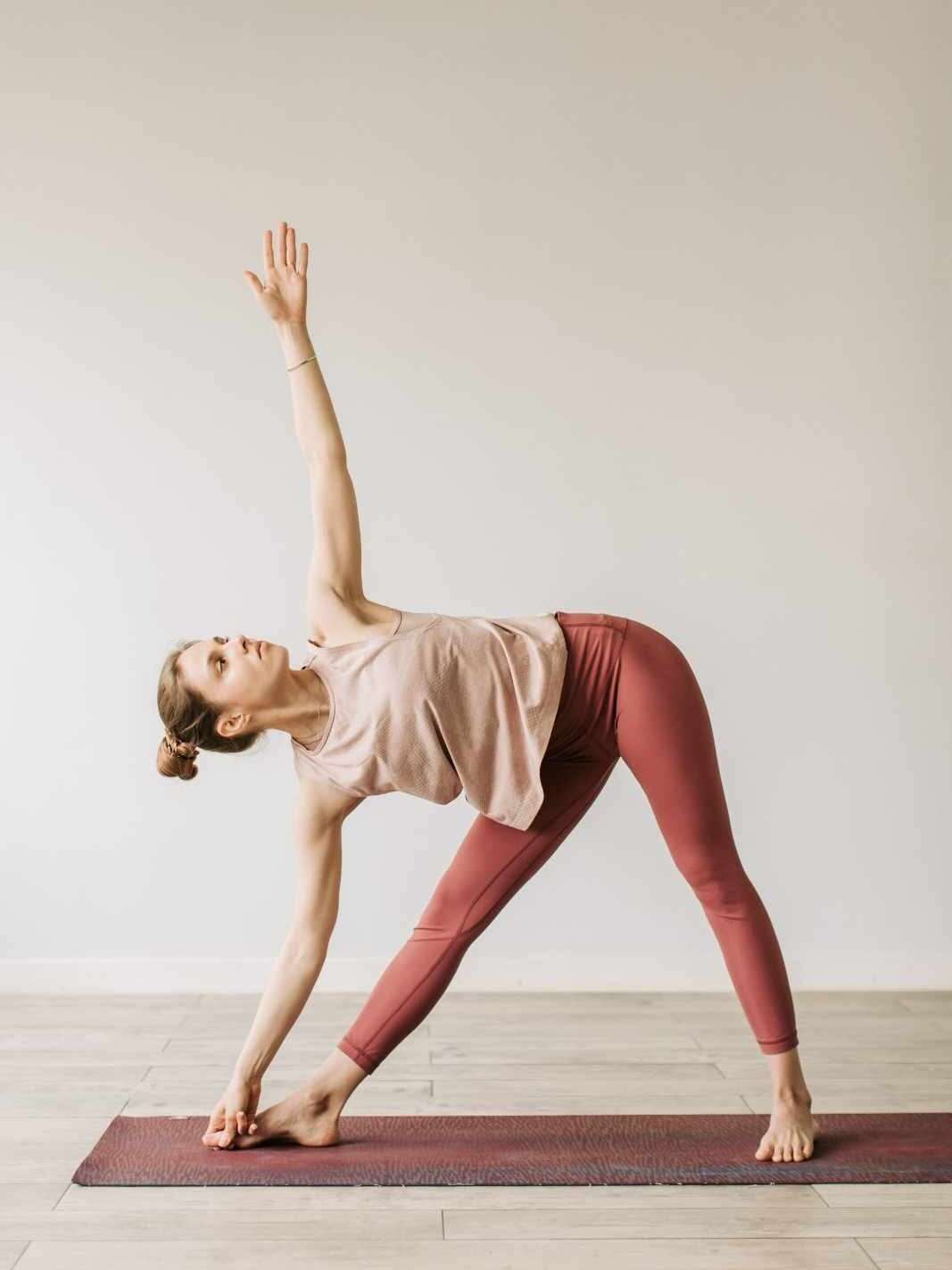
This standing twist pose is performed by standing with legs wide apart, extending one arm forward, and rotating the torso to place the opposite hand on the ground or block. Revolved Extended Triangle Pose stretches the legs, hips, and spine, improves balance, and stimulates digestion.
Wide-Legged Forward Bend with Twist (Prasarita Padottanasana with Twist):
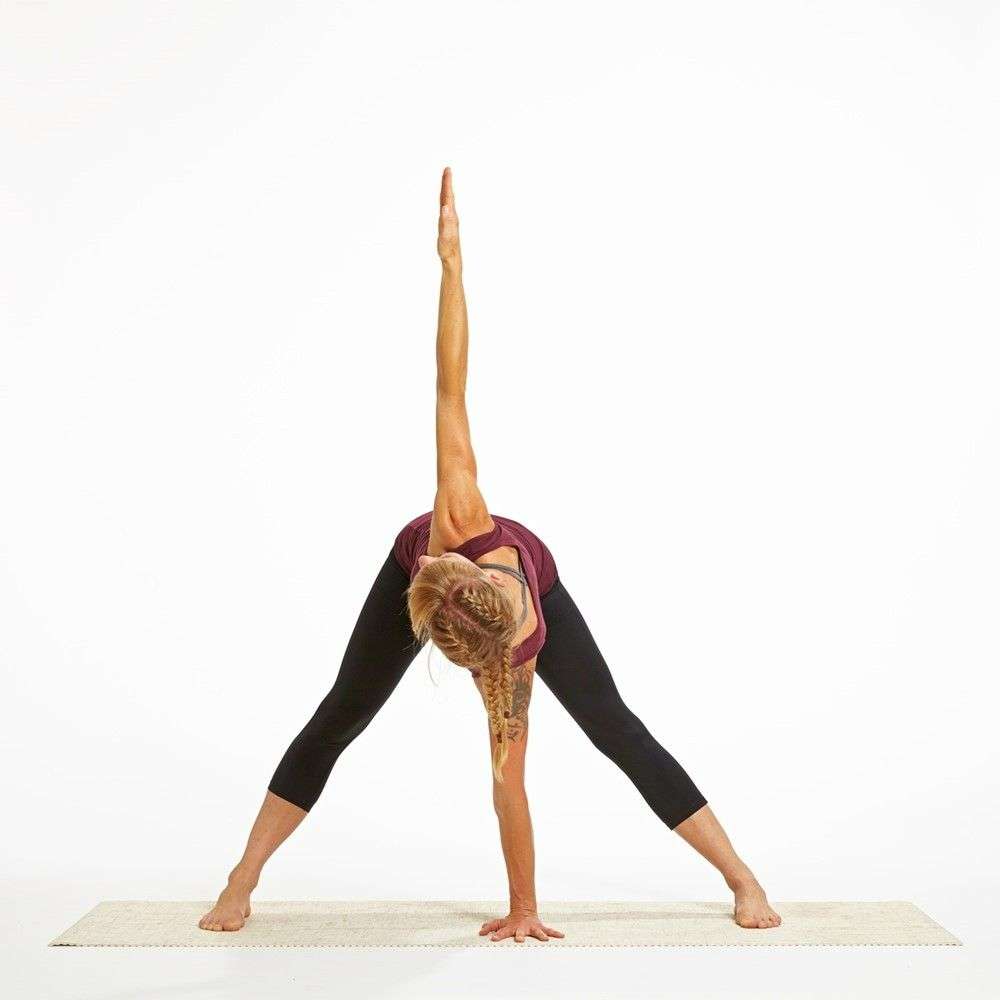
This is a variation of the Wide-Legged Forward Bend where, after folding forward, you twist the torso, bringing one arm up toward the ceiling. It provides a deep stretch for the hamstrings, hips, and back, enhances spinal mobility, and stimulates the abdominal organs.
Reclining Hand-to-Big-Toe Pose (Supta Padangusthasana):
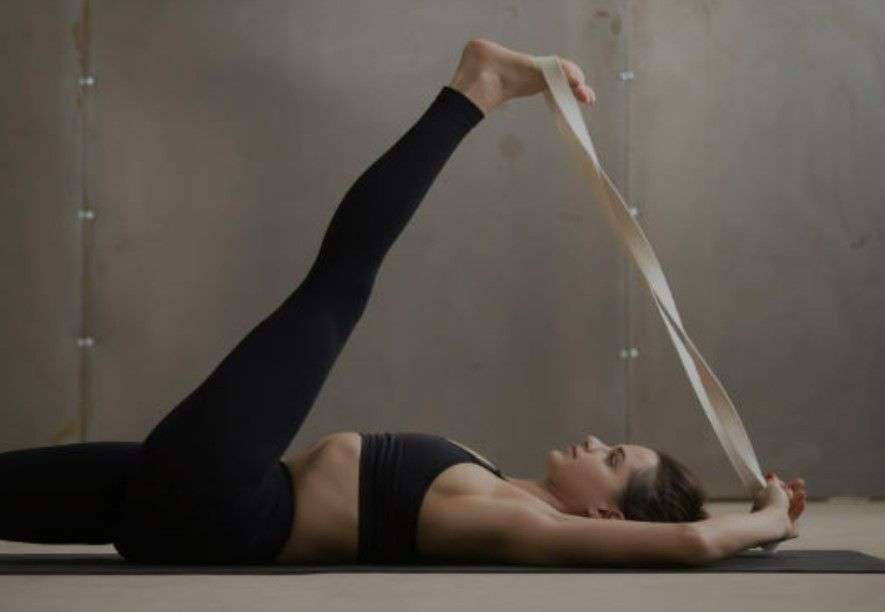
This reclined pose involves lying on your back and extending one leg upward, holding onto the big toe with your hand. Reclining Hand-to-Big-Toe Pose stretches the hamstrings, calves, and hips, improves flexibility, and relieves tension in the legs.
Revolved Triangle Pose (Parivrtta Parivrtta Trikonasana):
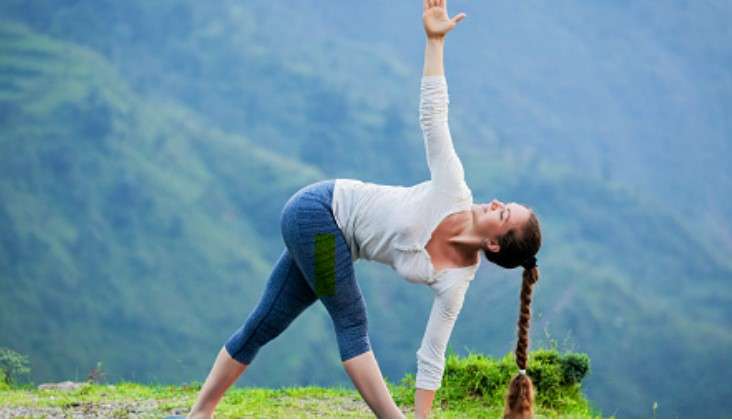
This standing twist pose is a variation of Triangle Pose where you rotate the torso and extend one arm upward while the other hand rests on the ground or a block. Revolved Revolved Triangle Pose strengthens the legs, stretches the hips and spine, improves digestion, and cultivates balance and focus.
Garland with Twist (Malasana with Twist):
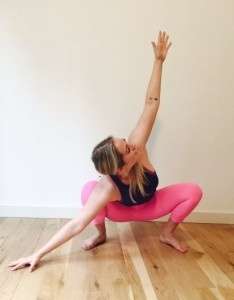
This pose combines a deep squat (Garland Pose) with a twist, where you place one hand on the ground and reach the other arm upward. It opens the hips, stretches the spine, improves digestion, and releases tension in the upper body.
Big Toe Pose (Padangusthasana):
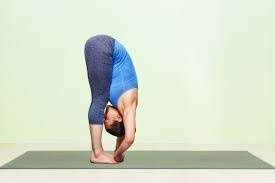
Big Toe Pose is a standing forward bend where you fold forward and hold onto the big toes with your fingers. It stretches the hamstrings, calves, and hips, improves balance, and calms the mind.
Side Plank Variation (Vasisthasana Variation):
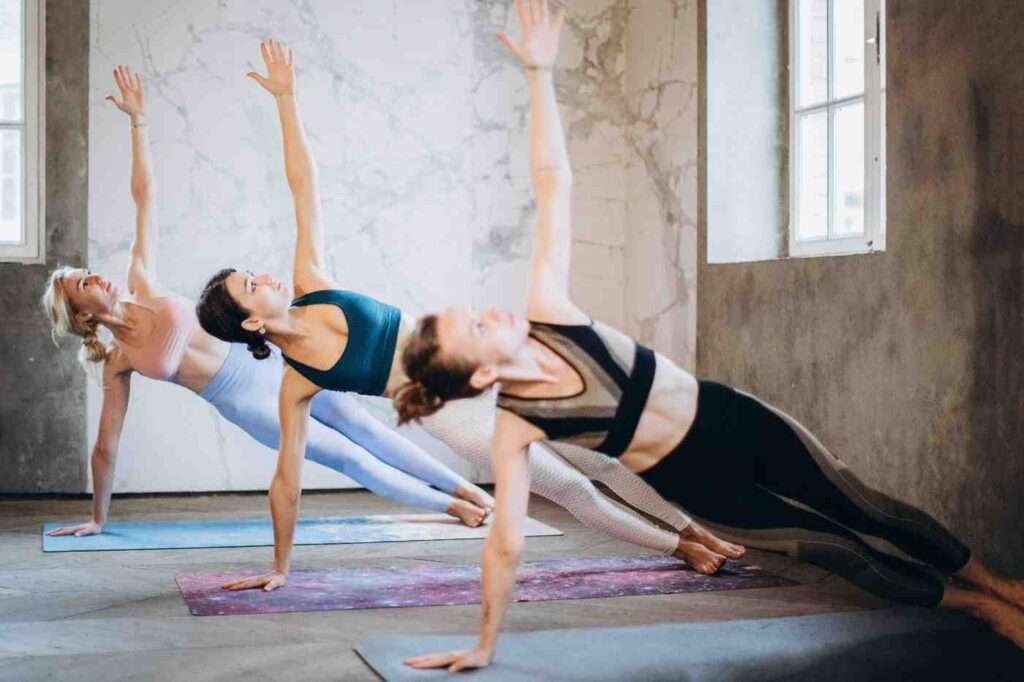
This variation of Side Plank involves modifying the traditional pose by placing the bottom knee on the ground while lifting the upper leg and arm. It strengthens the core, arms, and shoulders, improves balance, and builds stability.
Low Lunge (Anjaneyasana):
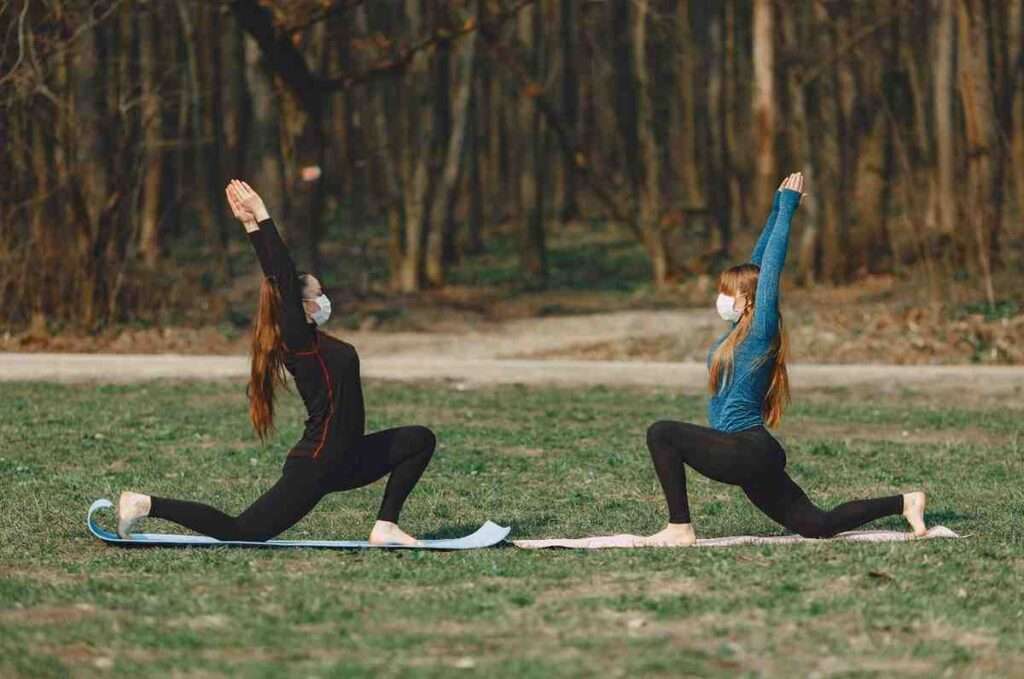
Low Lunge is a dynamic pose performed by stepping one foot forward into a lunge position with the back knee lowered to the ground. It stretches the hip flexors, quadriceps, and groin, strengthens the legs, and improves balance and stability. Low Lunge also opens the chest and heart, promoting a sense of expansion and vitality.
Reverse Warrior (Viparita Virabhadrasana):
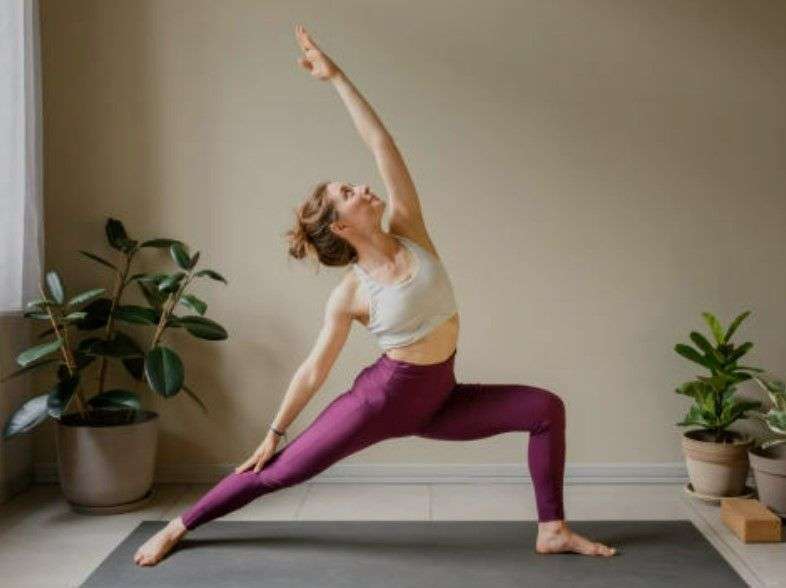
Reverse Warrior is a standing pose that involves lunging with one leg while reaching one arm up and leaning the torso back. It stretches the side body, hips, and legs, strengthens the legs and core, and improves flexibility. Reverse Warrior also cultivates a sense of inner strength, empowerment, and resilience.
King Pigeon Pose (Raja Kapotasana):
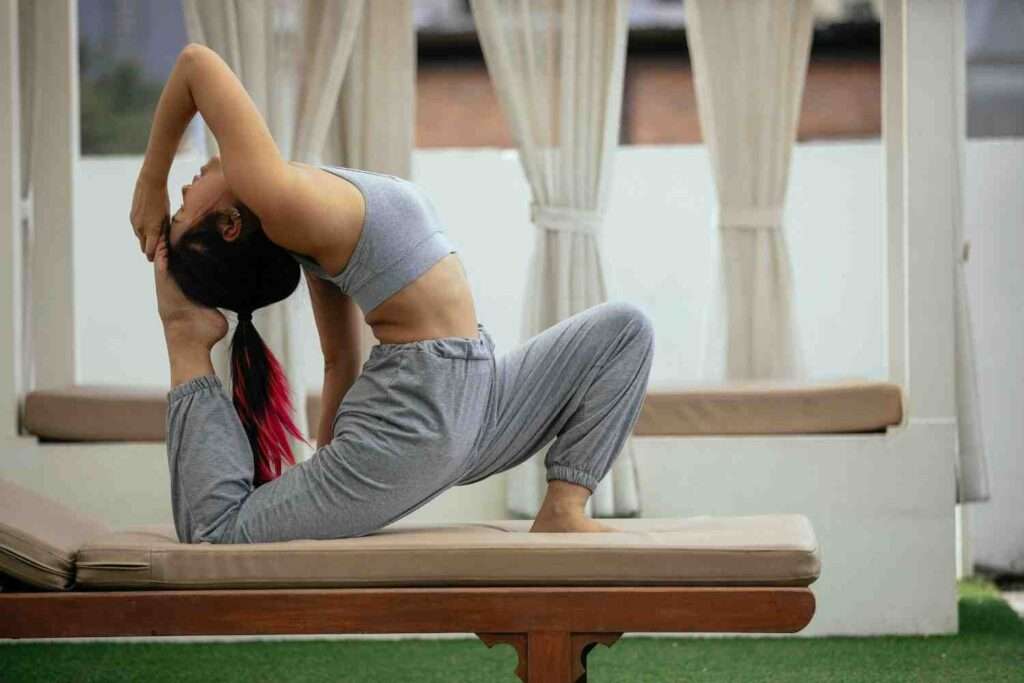
King Pigeon Pose is an advanced backbend that involves bending one knee and reaching the foot toward the head while the opposite leg remains extended. It stretches the hip flexors, quadriceps, and chest, opens the shoulders and heart, and enhances spinal flexibility. King Pigeon Pose also stimulates the energy centers of the body, promoting emotional release and a sense of surrender.
Three-Legged Downward Facing Dog (Eka Pada Adho Mukha Svanasana):
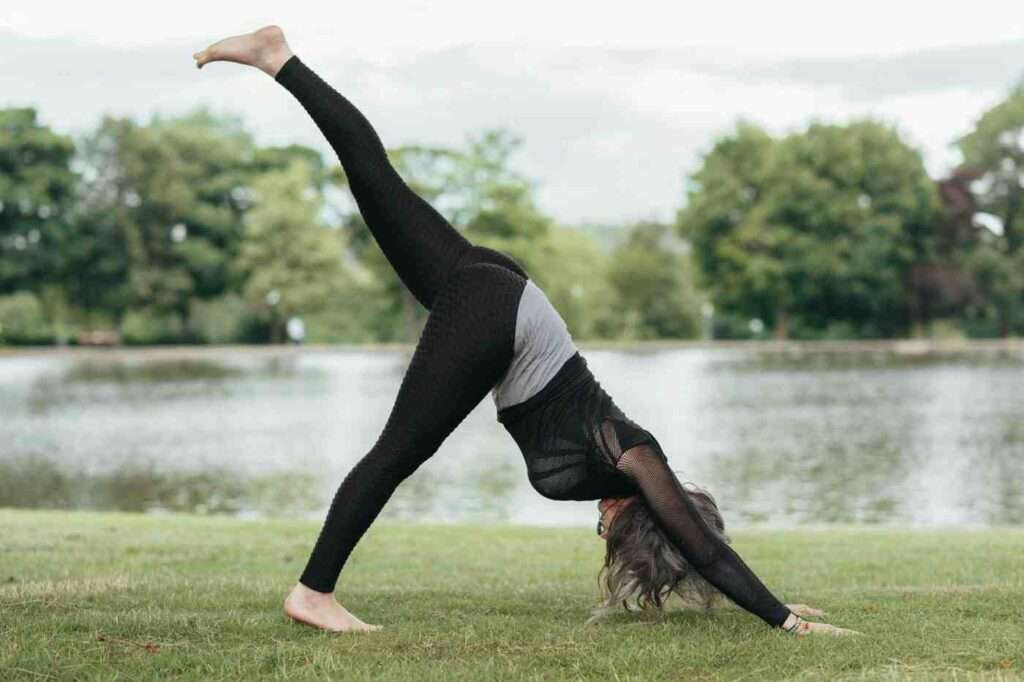
Three-Legged Downward Facing Dog is a variation of the traditional Downward Facing Dog where one leg is lifted and extended upward. It strengthens the arms, shoulders, and core, stretches the hamstrings and calves, and improves balance and stability. Three-Legged Downward Facing Dog also increases blood circulation and energizes the body and mind.
Extended Revolved Triangle Pose (Utthita Parivrtta Trikonasana):
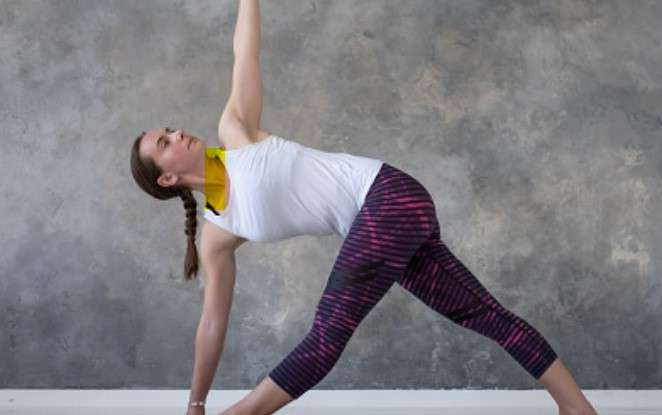
Extended Revolved Triangle Pose is a standing twist pose performed by extending one leg forward, rotating the torso to the side, and reaching one hand toward the ground while the other hand extends upward. It stretches the legs, hips, and spine, improves digestion, and enhances balance and focus. Extended Revolved Triangle Pose also stimulates the abdominal organs and detoxifies the body.
Half Moon Pose (Ardha Chandrasana):
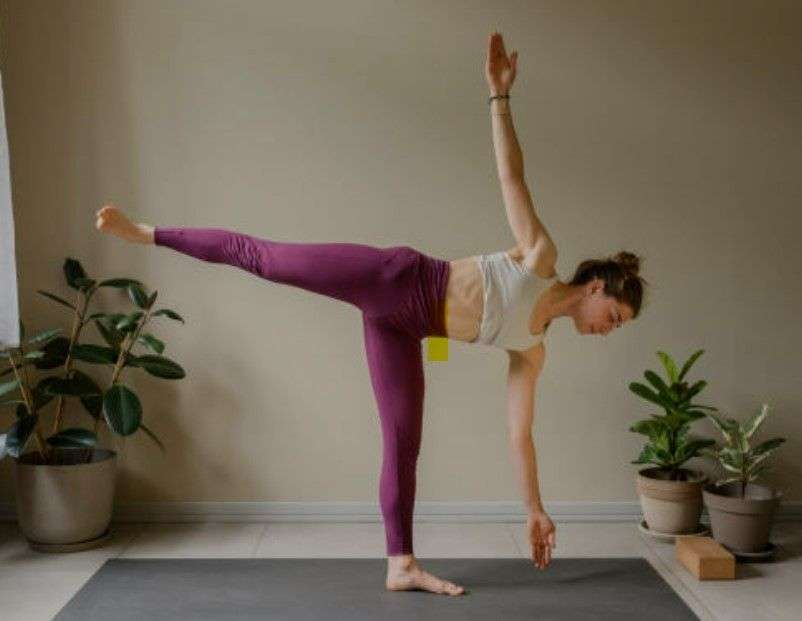
Half Moon Pose is a balancing pose where you balance on one leg, extend the other leg backward, and reach one hand toward the ground while the other arm extends upward. It strengthens the legs, core, and ankles, improves coordination and balance, and stretches the hamstrings and hips. Half Moon Pose also improves focus, concentration, and mental clarity.
Extended Side Angle Pose (Utthita Parsvakonasana):
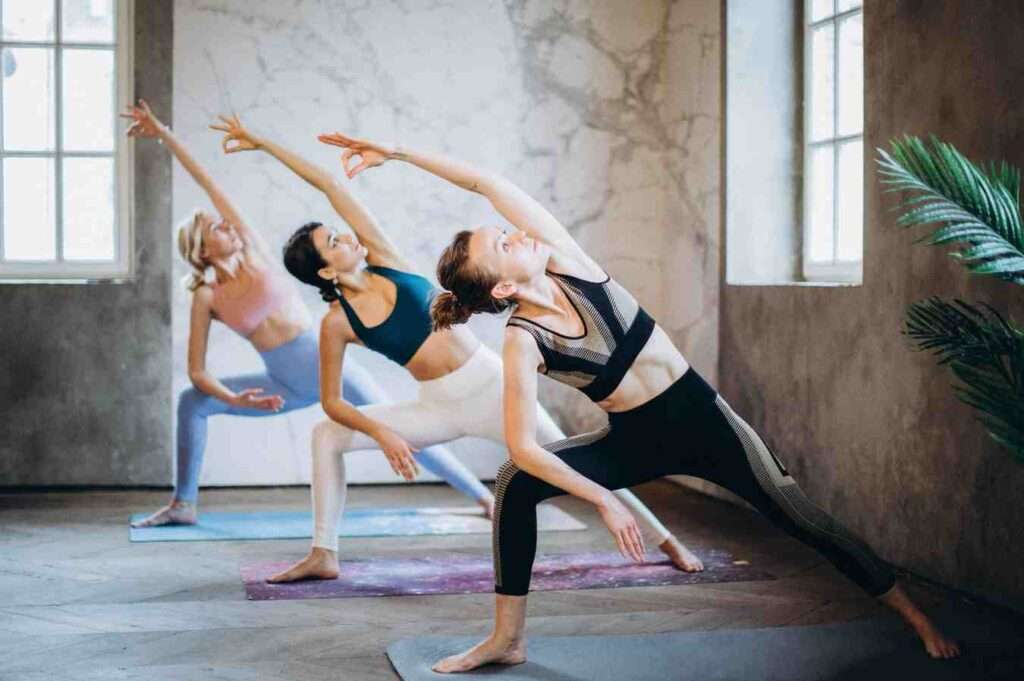
Extended Side Angle Pose is a deep lunge with one knee bent, the opposite leg extended, and one arm reaching overhead while the other hand rests on the ground or a block. It stretches the groin, hips, and hamstrings, strengthens the legs, and improves flexibility and stability. Extended Side Angle Pose also stimulates digestion, opens the chest, and cultivates a sense of grounding and stability.
Noose Pose (Pasasana):
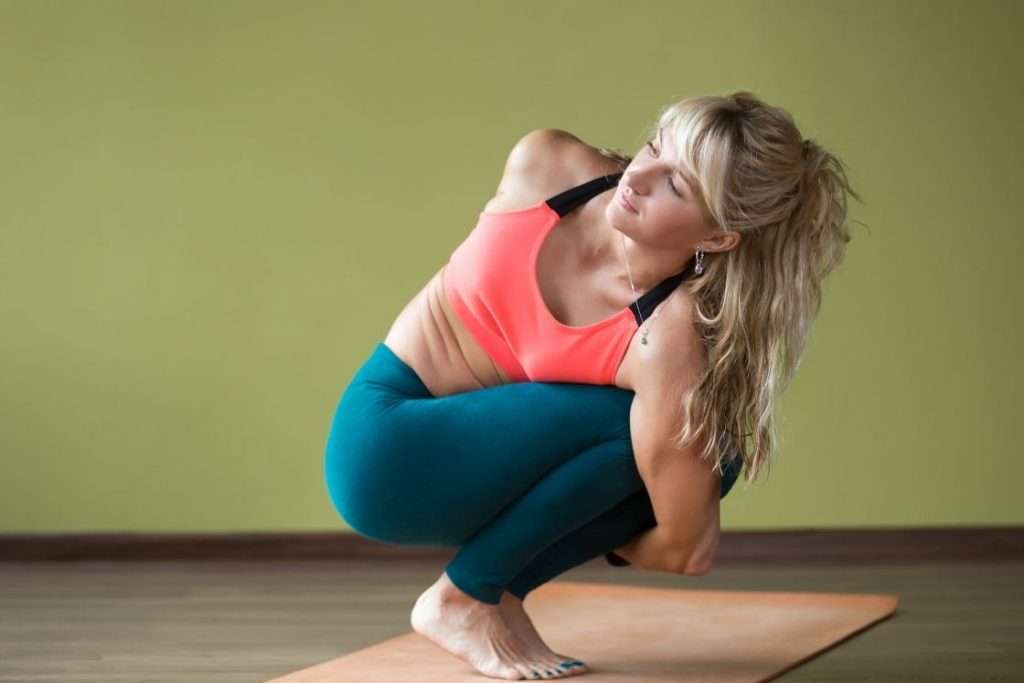
Noose Pose is a seated twist pose performed by kneeling with one leg crossed over the other and twisting the torso while wrapping one arm around the bent leg. It stretches the hips, spine, and shoulders, improves digestion, and enhances spinal mobility and flexibility. Noose Pose also releases tension in the upper body and promotes a sense of detoxification and purification.
Revolved Chair with Prayer Twist (Parivrtta Utkatasana with Prayer Twist):
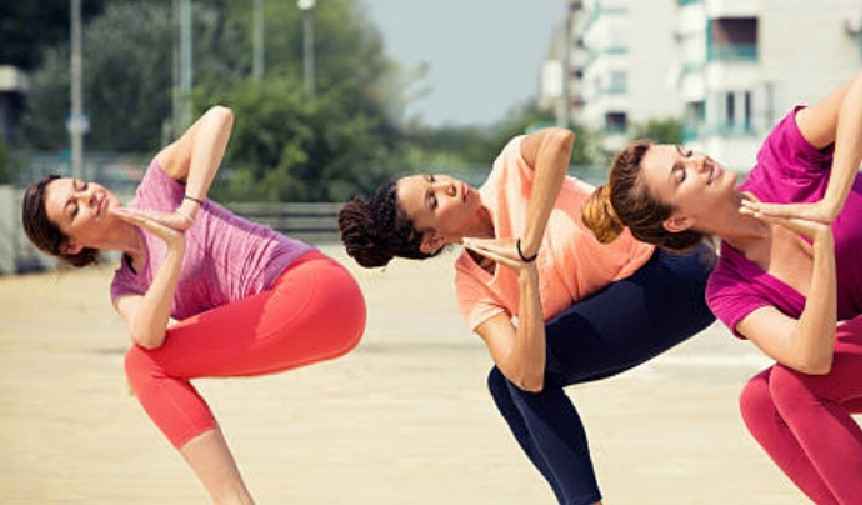
This pose combines the challenging Chair Pose with a twist. You start in Chair Pose and then twist the torso to one side while bringing the hands together at the heart center. It strengthens the legs, core, and upper body, improves balance and stability, and detoxifies the body. Revolved Chair with Prayer Twist also stimulates the digestive system and cultivates mental focus and concentration.
Revolved Side Angle with Bind (Parivrtta Parsvakonasana with Bind):
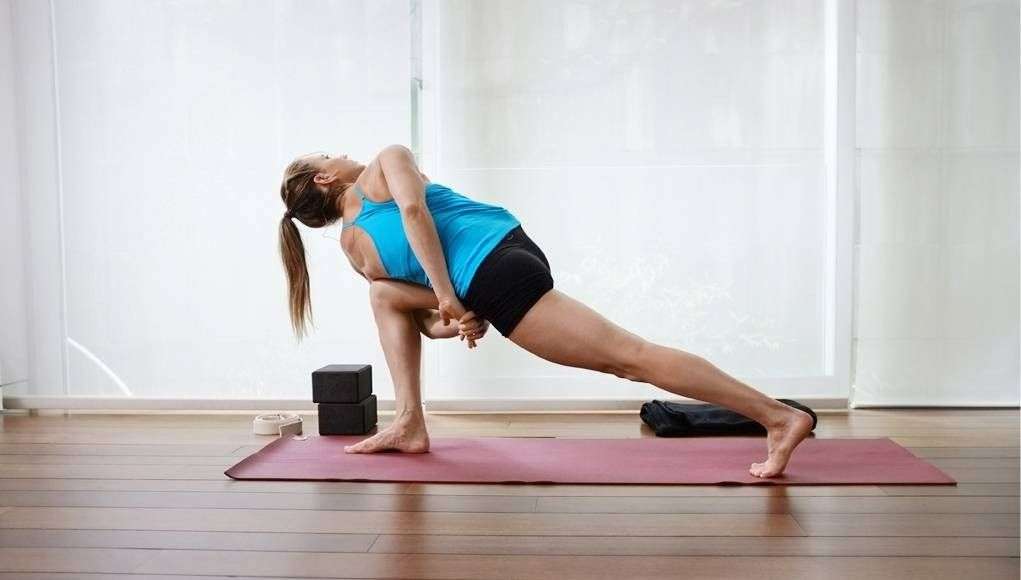
Revolved Side Angle with Bind is an intermediate to advanced pose that involves lunging with one leg, rotating the torso to the side, and binding the arms by wrapping one arm around the bent leg and the other arm behind the back. It strengthens the legs, stretches the hips and spine, improves flexibility, and promotes detoxification. Revolved Side Angle with Bind also stimulates the abdominal organs and energizes the body.
Revolved Triangle with Bind (Parivrtta Trikonasana with Bind):
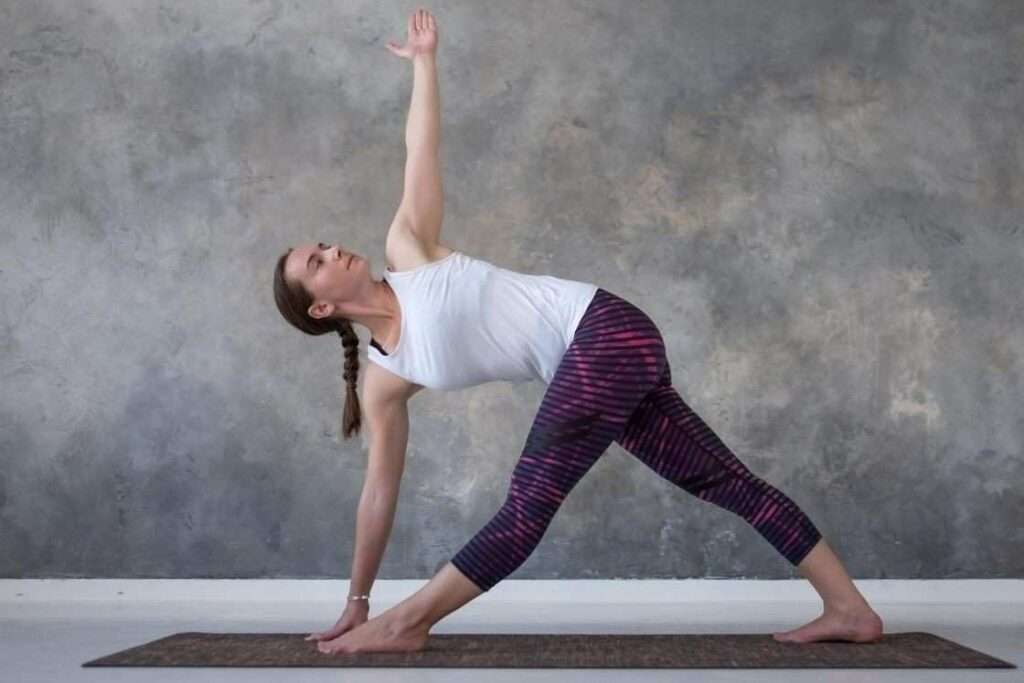
Revolved Triangle with Bind is a variation of Triangle Pose where, after extending one leg forward and rotating the torso, you bind the arms by reaching one arm underneath the extended leg and the other arm behind the back. It stretches the legs, hips, and spine, improves digestion, and enhances balance and stability. Revolved Triangle with Bind also stimulates the abdominal organs and promotes a sense of expansion and openness.
Baby Grasshopper Pose :
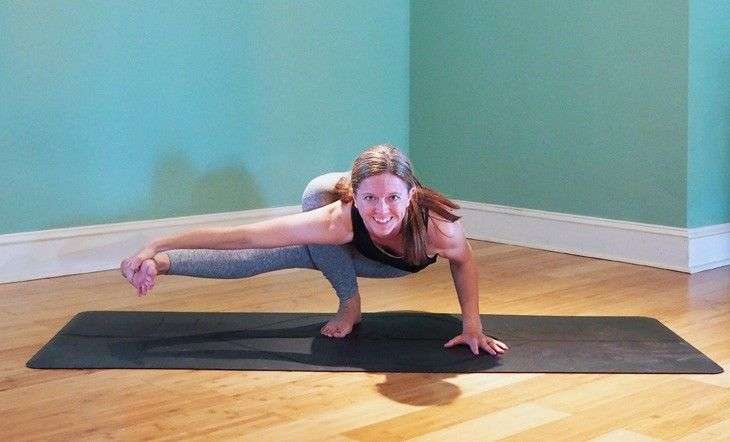
Baby Grasshopper Pose is an arm balance pose that involves balancing on the hands while bending one leg and placing the foot on the opposite upper arm. It strengthens the arms, core, and wrists, improves balance and coordination, and enhances upper body strength. Baby Grasshopper Pose also cultivates focus, determination, and a sense of playfulness.
Eight-Angle Pose (Astavakrasana):
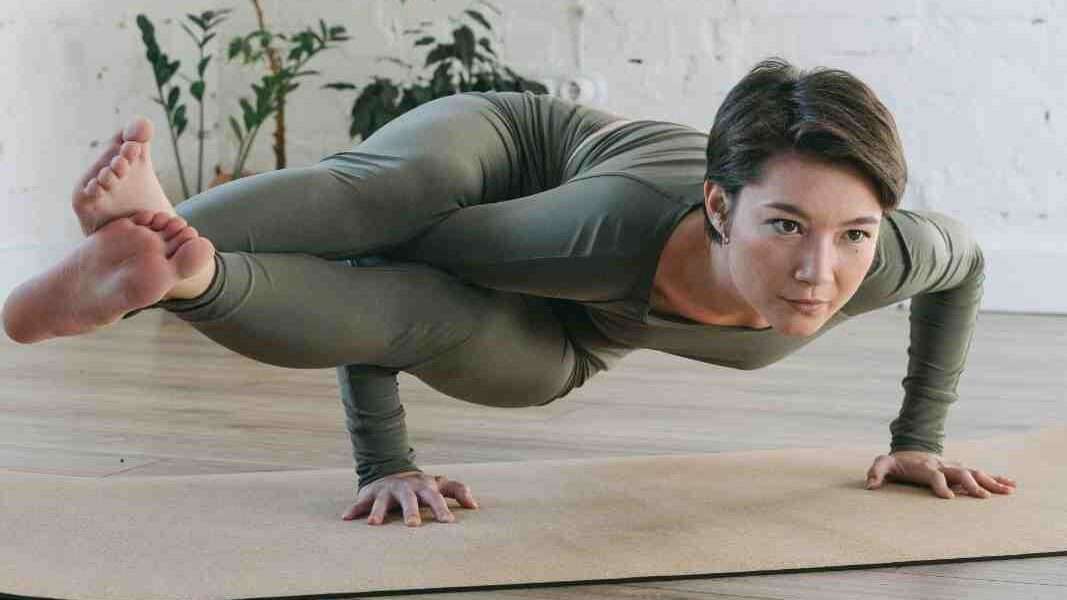
Eight-Angle Pose is an advanced arm balance pose that requires strength, flexibility, and balance. It involves balancing on the hands while crossing the legs and twisting the torso. It strengthens the arms, core, and wrists, improves balance and coordination, and enhances upper body strength. Eight-Angle Pose also cultivates focus, determination, and a sense of playfulness.
Fire Log Pose (Agnistambhasana):
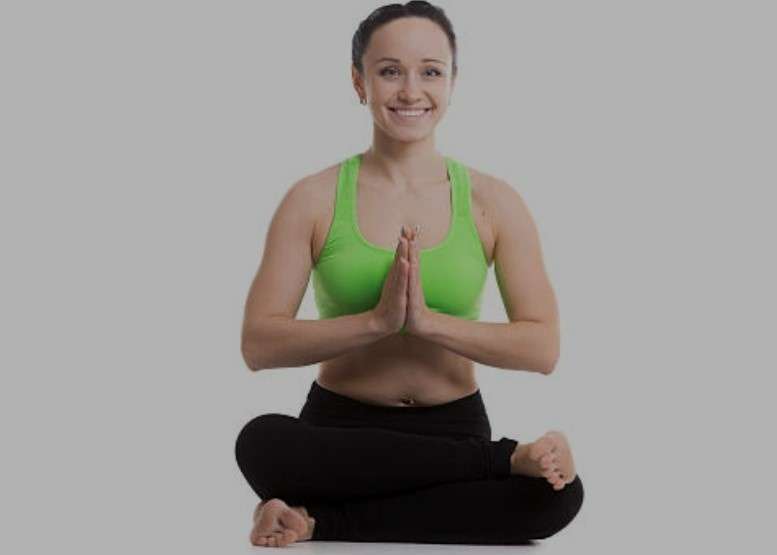
Fire Log Pose is a seated hip-opening pose where you stack the shins, one on top of the other, and sit between the feet. It stretches the outer hips, glutes, and thighs, increases hip mobility, and helps relieve tension in the lower back and hips. Fire Log Pose also calms the mind, promotes relaxation, and stimulates the flow of energy in the body.
Fallen Triangle (Fallen Triangle):
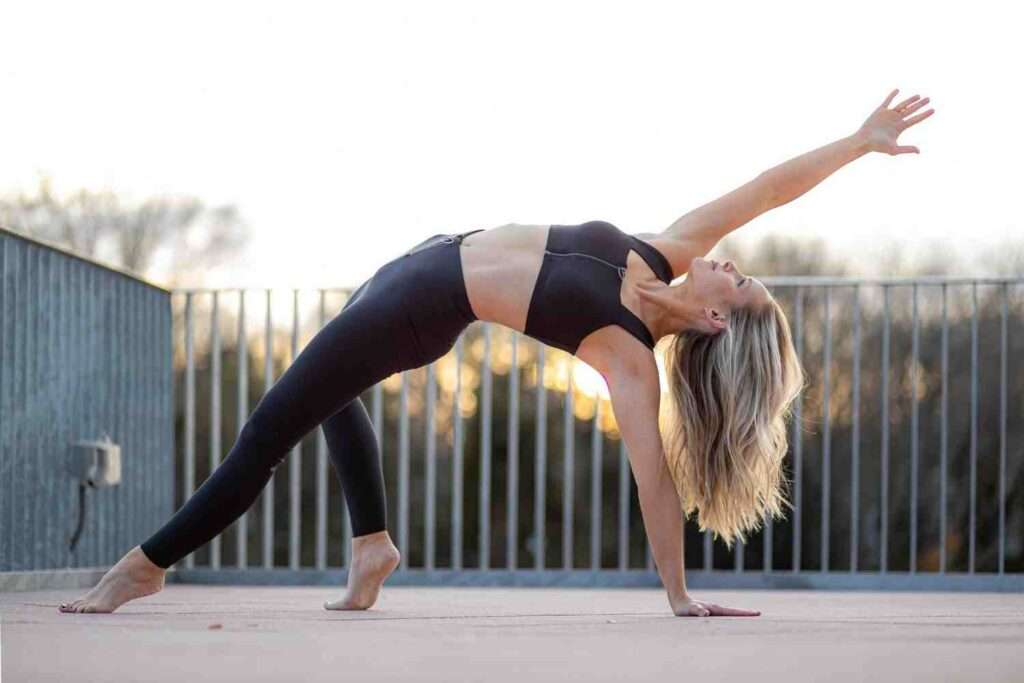
Fallen Triangle is a variation of Triangle Pose where you reach one arm down toward the ground and lift the opposite leg, creating a diagonal line with the body. It strengthens the legs, core, and shoulders, stretches the hamstrings and hips, and improves balance and stability. Fallen Triangle also cultivates a sense of expansion and freedom in the body and mind.
Feathered Peacock Pose (Pincha Mayurasana):
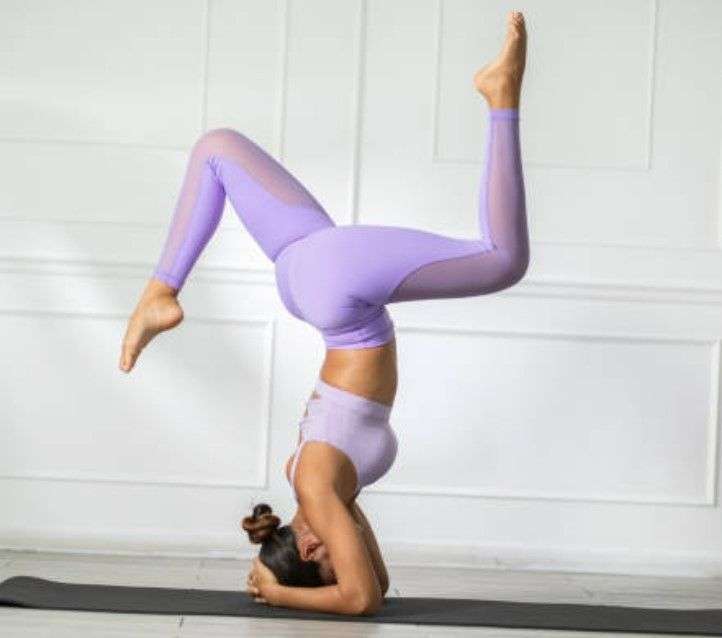
Feathered Peacock Pose, also known as Forearm Stand, is an inversion pose performed by balancing on the forearms and lifting the legs upward. It strengthens the arms, shoulders, and core, improves balance and stability, and enhances concentration and focus. Feathered Peacock Pose also stimulates the nervous system and promotes a sense of inner strength and confidence.
Flying Pigeon Pose (Eka Pada Galavasana):
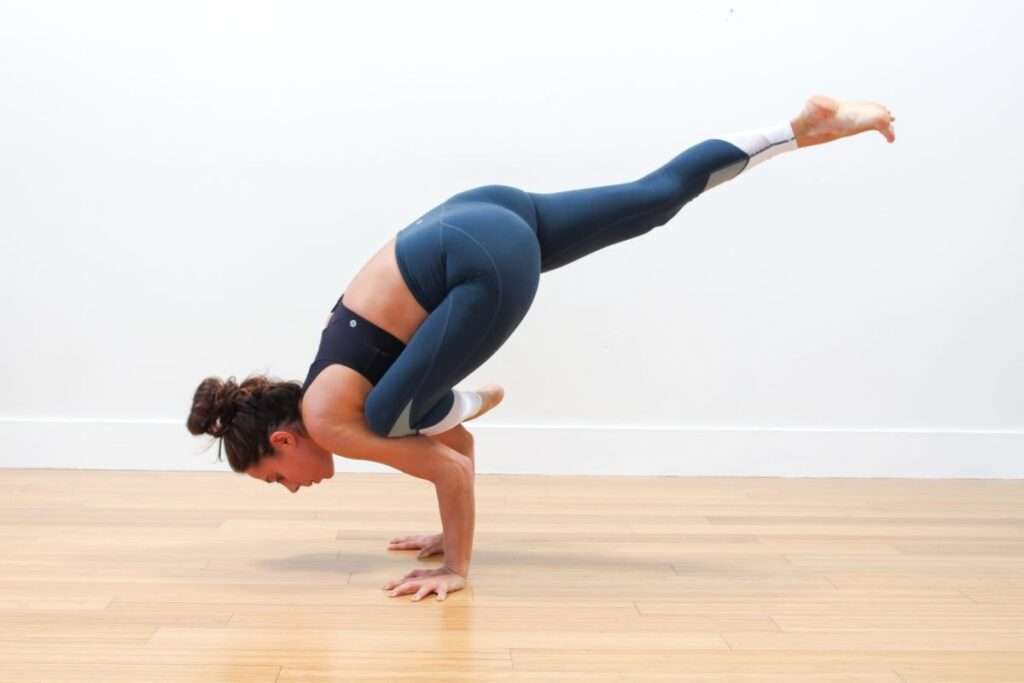
Flying Pigeon Pose is an advanced arm balance pose that involves balancing on the hands while bringing one leg into a figure-four position on the opposite upper arm. It strengthens the arms, core, and wrists, improves balance and coordination, and enhances upper body strength. Flying Pigeon Pose also cultivates courage, concentration, and a sense of lightness.
Grasshopper Pose (Grasshopper Pose):
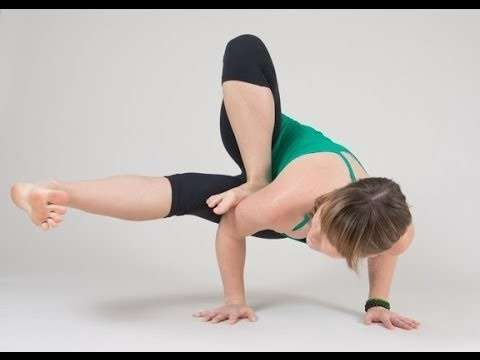
Grasshopper Pose is an advanced arm balance pose that requires strength, flexibility, and balance. It involves balancing on the hands while twisting the torso and bringing one leg into a half-lotus position. It strengthens the arms, core, and wrists, improves balance and coordination, and enhances upper body strength. Grasshopper Pose also cultivates focus, determination, and a sense of lightness.
Handstand (Adho Mukha Vrksasana):
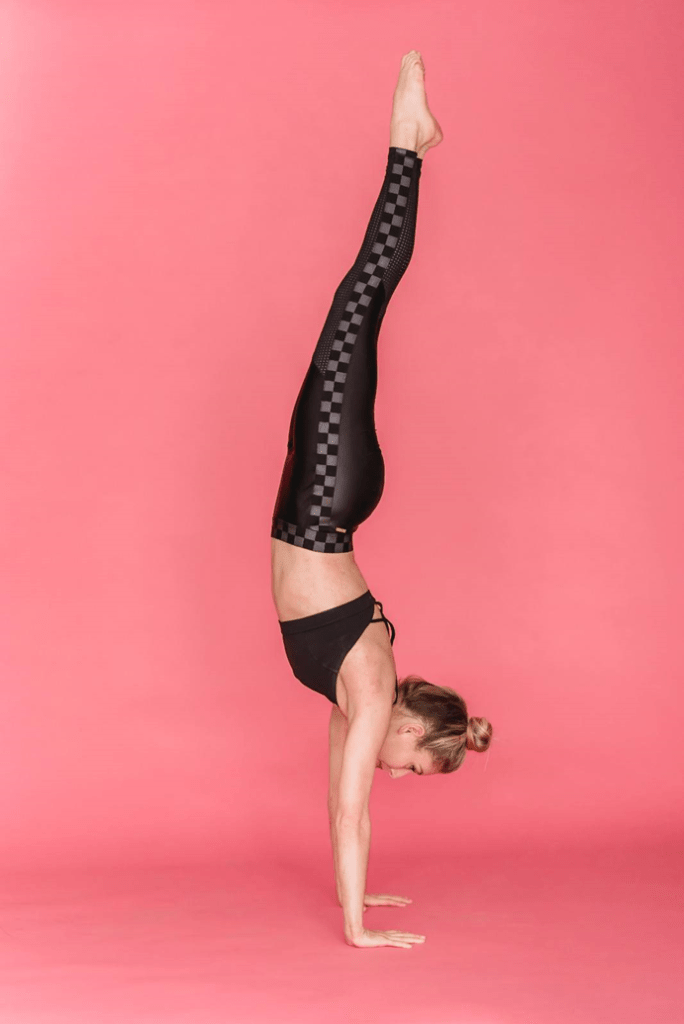
Handstand is an advanced inversion pose where you balance on your hands with your body inverted. It strengthens the arms, shoulders, and core, improves balance and stability, and enhances focus and concentration. Handstand also stimulates the nervous system, boosts circulation, and cultivates a sense of confidence and mental resilience.
Heron Pose (Krounchasana):

Heron Pose is a seated forward bend pose where you extend one leg straight in front of you and fold forward to reach for the foot. It stretches the hamstrings, calves, and hips, improves flexibility, and stimulates the digestive system. Heron Pose also promotes grounding, relaxation, and introspection.
Lizard Pose (Utthan Pristhasana):

Lizard Pose is a deep hip-opening pose where you lunge with one leg forward and bring the hands to the ground on the inside of the front foot. It stretches the hip flexors, groin, and hamstrings, opens the hips, and improves flexibility. Lizard Pose also activates the muscles of the legs and core, promoting stability and strength.
One-Legged King Pigeon Pose (Eka Pada Raja Kapotasana):

One-Legged King Pigeon Pose is an advanced backbend that involves bending one knee and reaching the foot toward the head while the opposite leg remains extended. It stretches the hip flexors, quadriceps, and chest, opens the shoulders and heart, and enhances spinal flexibility. One-Legged King Pigeon Pose also stimulates the energy centers of the body, promoting emotional release and a sense of surrender.
Peacock Pose (Mayurasana):

Peacock Pose is an advanced arm balance pose that requires strength, balance, and control. It involves balancing on the hands with the arms bent and the body parallel to the ground. It strengthens the arms, shoulders, and core, improves digestion, and stimulates the abdominal organs. Peacock Pose also cultivates focus, determination, and a sense of inner power.
Scale Pose (Tolasana):

Scale Pose is an arm balance pose that involves balancing on the hands with the legs lifted and extended in front of you. It strengthens the arms, shoulders, and core, improves balance and stability, and enhances upper body strength. Scale Pose also cultivates focus, concentration, and a sense of lightness.
Eight-Limbed Pose (Astanga Namaskara):

Eight-Limbed Pose is a transitional pose often performed in a Sun Salutation sequence. It involves lowering the knees, chest, and chin to the ground while keeping the hips elevated and the elbows bent. It strengthens the arms, chest, and shoulders, builds core stability, and prepares the body for more challenging poses. Eight-Limbed Pose also cultivates humility, surrender, and mindfulness.
Tortoise Pose (Kurmasana):

Tortoise Pose is a seated forward bend pose where you sit with the legs extended and fold forward to reach for the feet or ankles. It stretches the hamstrings, hips, and spine, improves flexibility, and promotes relaxation and introspection. Tortoise Pose also stimulates the abdominal organs and helps calm the mind.
Tortoise Headstand (Salamba Kurmasana):

Tortoise Headstand is an advanced inversion pose that combines the balancing benefits of a Headstand with the forward folding of a Tortoise Pose. It strengthens the arms, shoulders, and core, improves balance and stability, and enhances focus and concentration. Tortoise Headstand also promotes a sense of introspection, surrender, and inner strength.
Tiger Pose (Vyaghrasana):

Tiger Pose is a kneeling pose that involves extending one leg backward and reaching the opposite arm forward, creating a diagonal line with the body. It stretches the hip flexors, quadriceps, and shoulders, strengthens the core and glutes, and improves balance and flexibility. Tiger Pose also cultivates focus, determination, and a sense of grace and power.
Upward Bow Pose (Urdhva Dhanurasana):

Upward Bow Pose, also known as Wheel Pose, is a deep backbend pose performed by lying on the back and pressing the hands and feet into the ground to lift the hips and chest upward. It strengthens the arms, shoulders, and legs, opens the chest and shoulders, and improves spinal flexibility. Upward Bow Pose also stimulates the nervous system, energizes the body, and cultivates a sense of joy and openness.
Wheel Pose (Chakrasana):

Wheel Pose, also known as Upward Facing Bow Pose, is an advanced backbend that involves pressing the hands and feet into the ground to lift the hips and chest upward. It strengthens the arms, shoulders, and legs, opens the chest and shoulders, and improves spinal flexibility. Wheel Pose also stimulates the energy centers of the body, promotes emotional release and a sense of expansiveness, and cultivates courage and confidence.
Please note that it’s important to practice yoga poses under the guidance of a qualified yoga instructor, especially if you’re new to yoga or have any specific health concerns or injuries. They can provide proper instructions, modifications, and ensure your safety during the practice.
